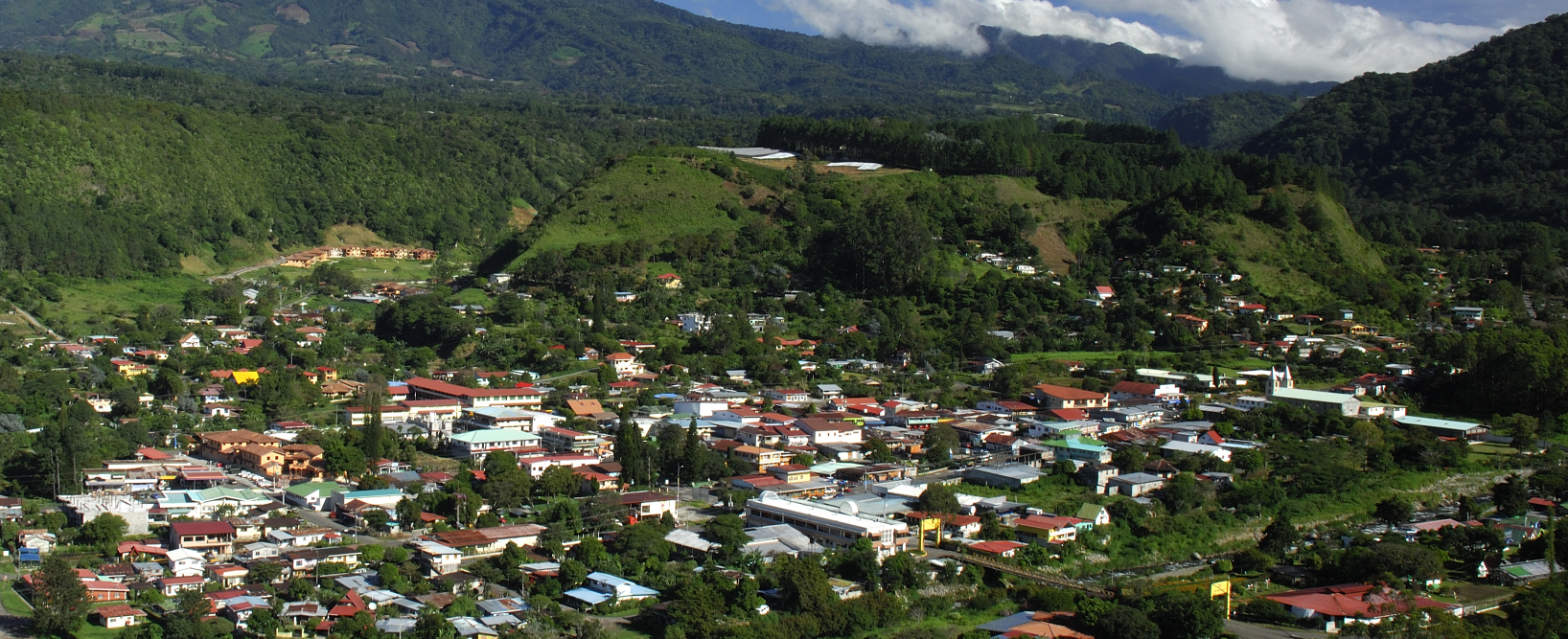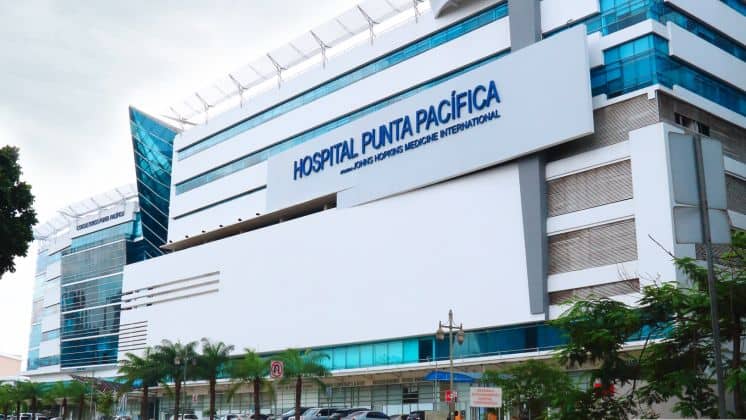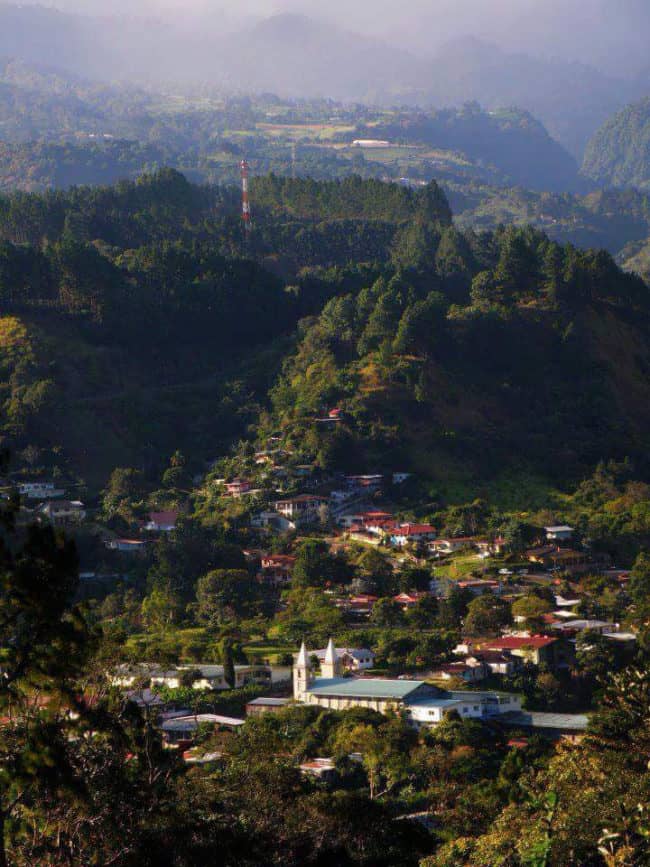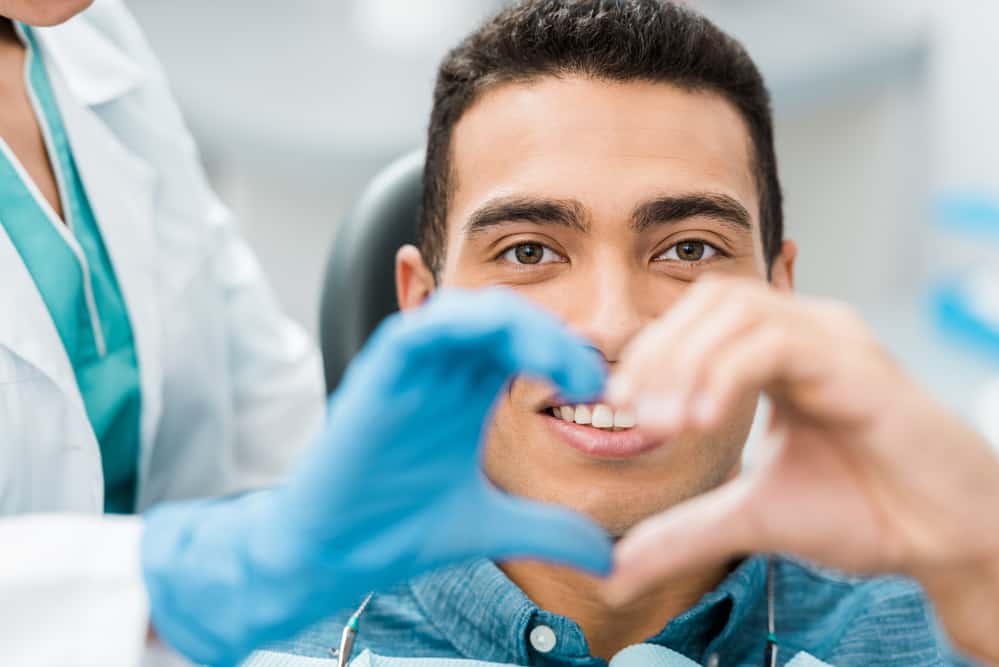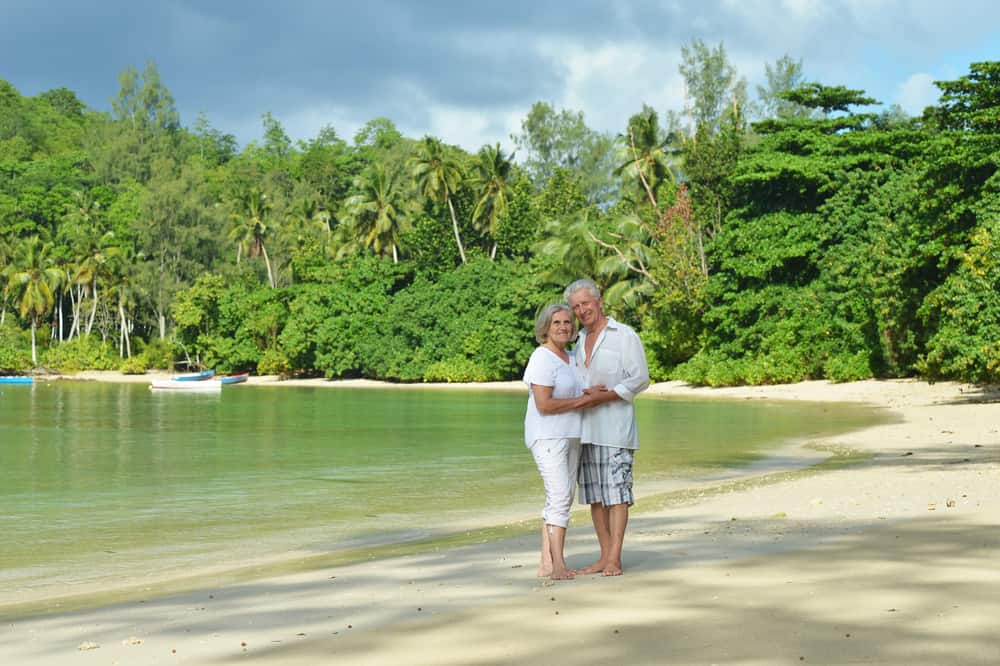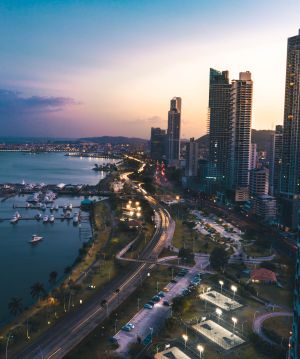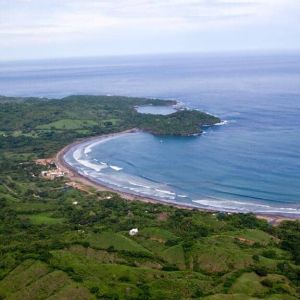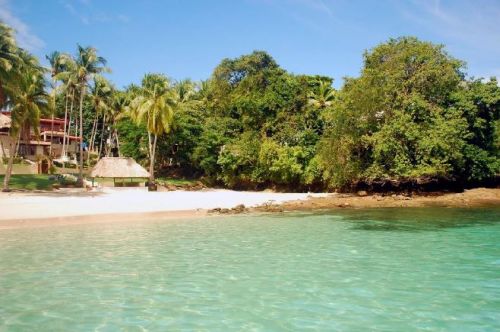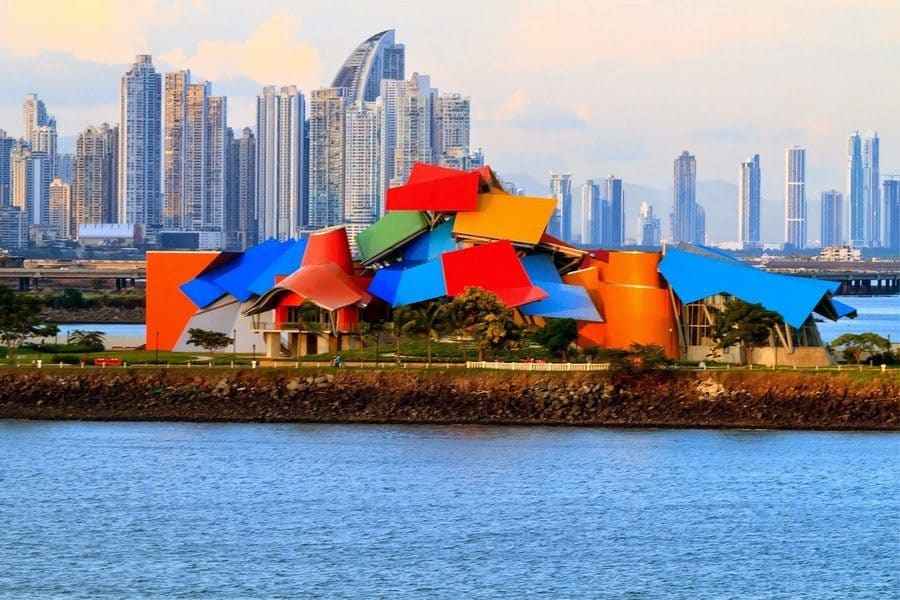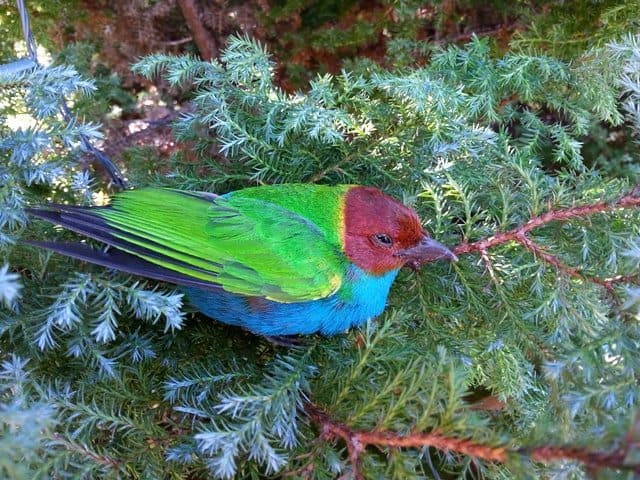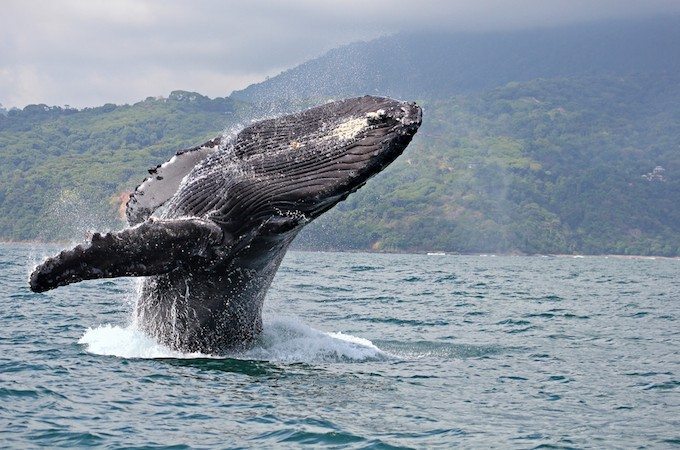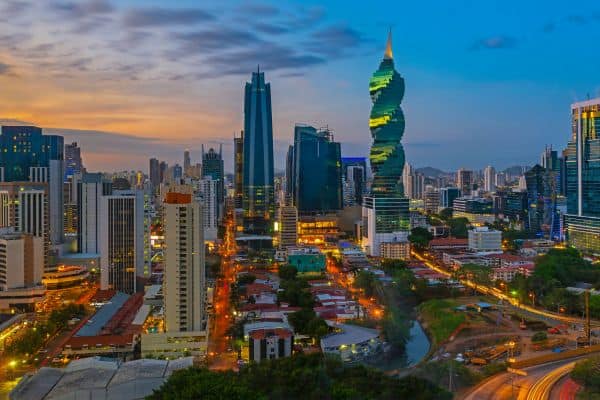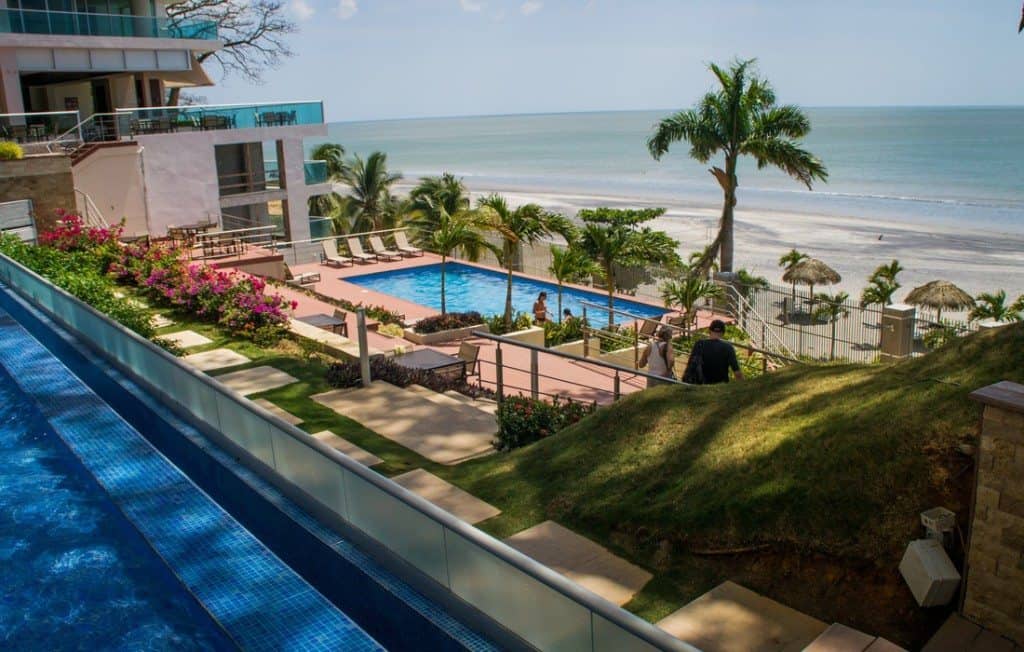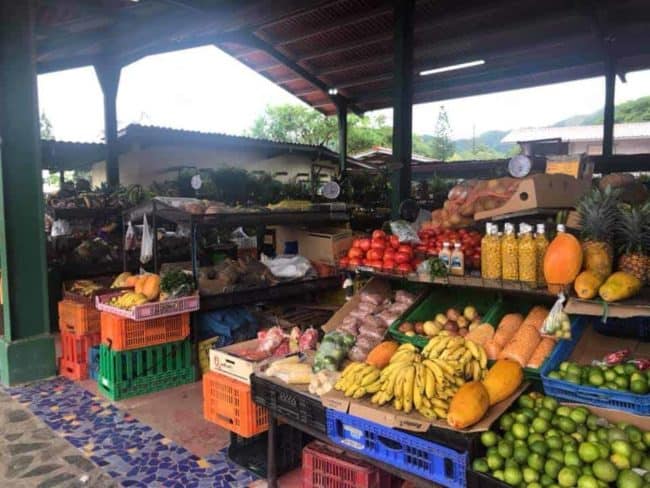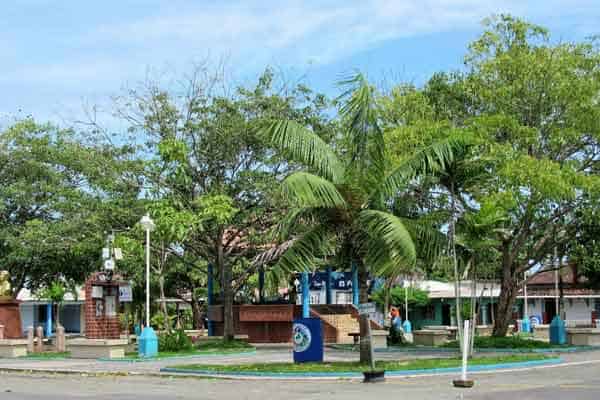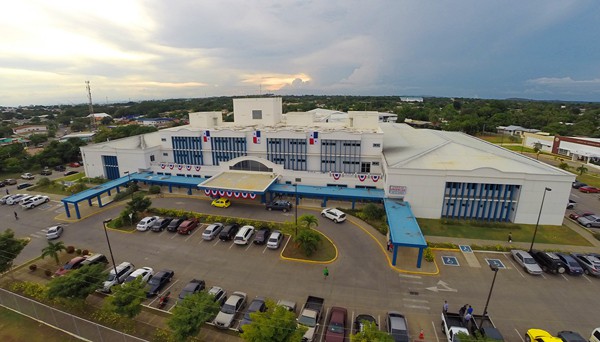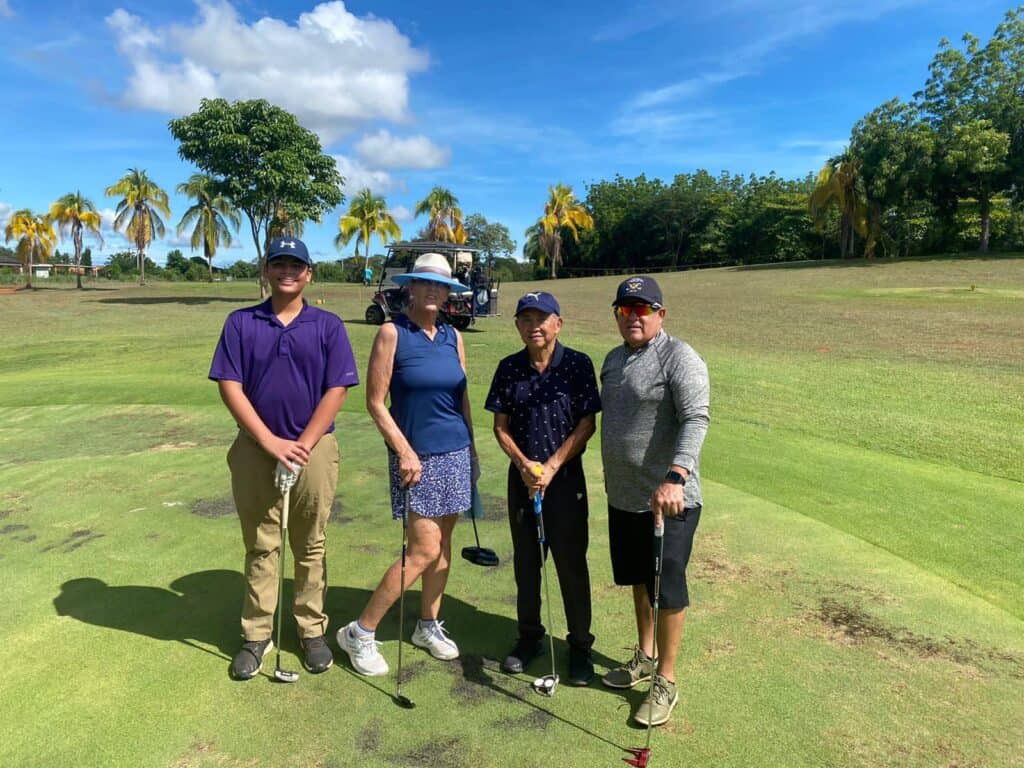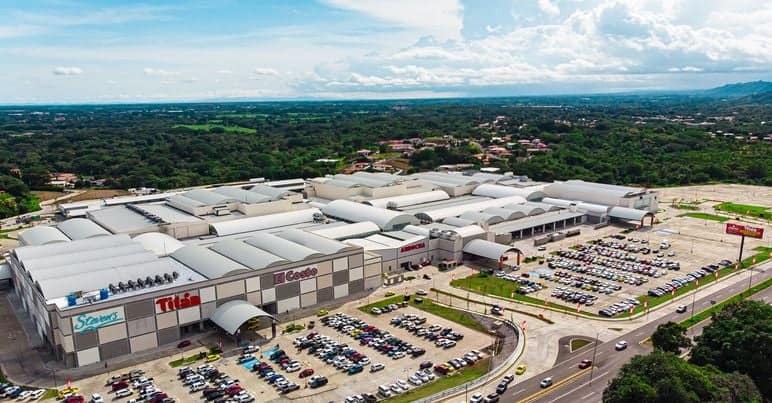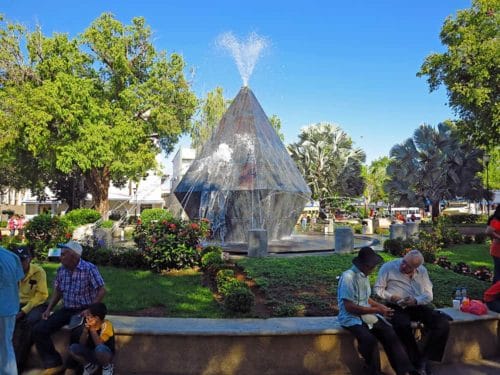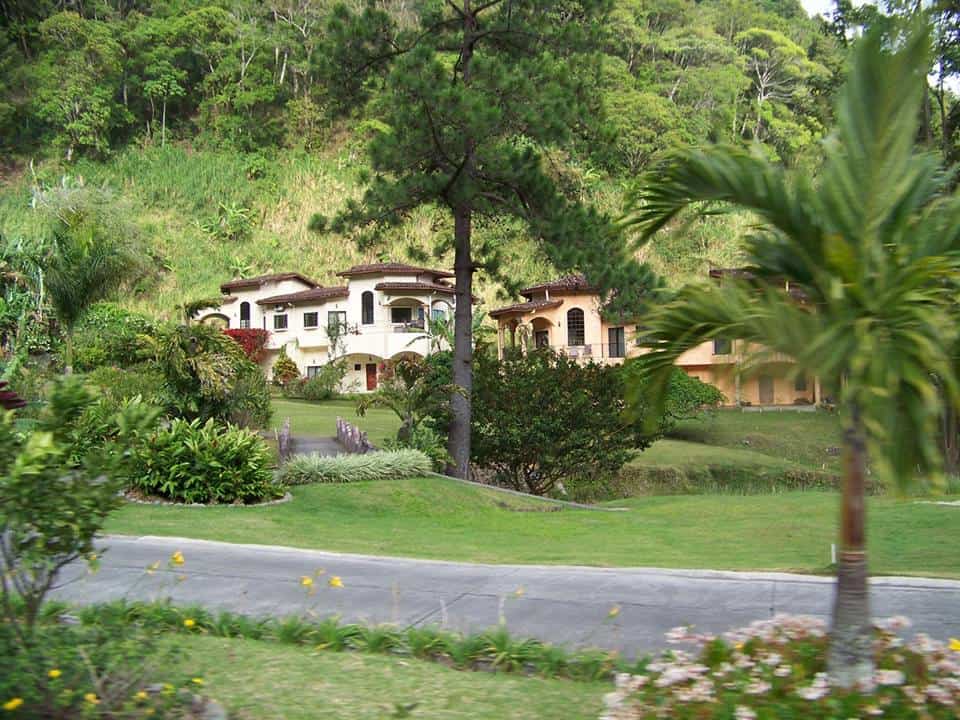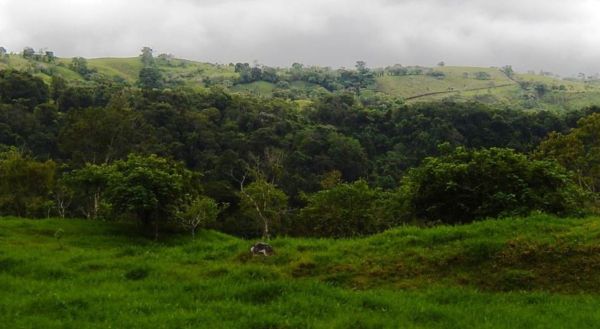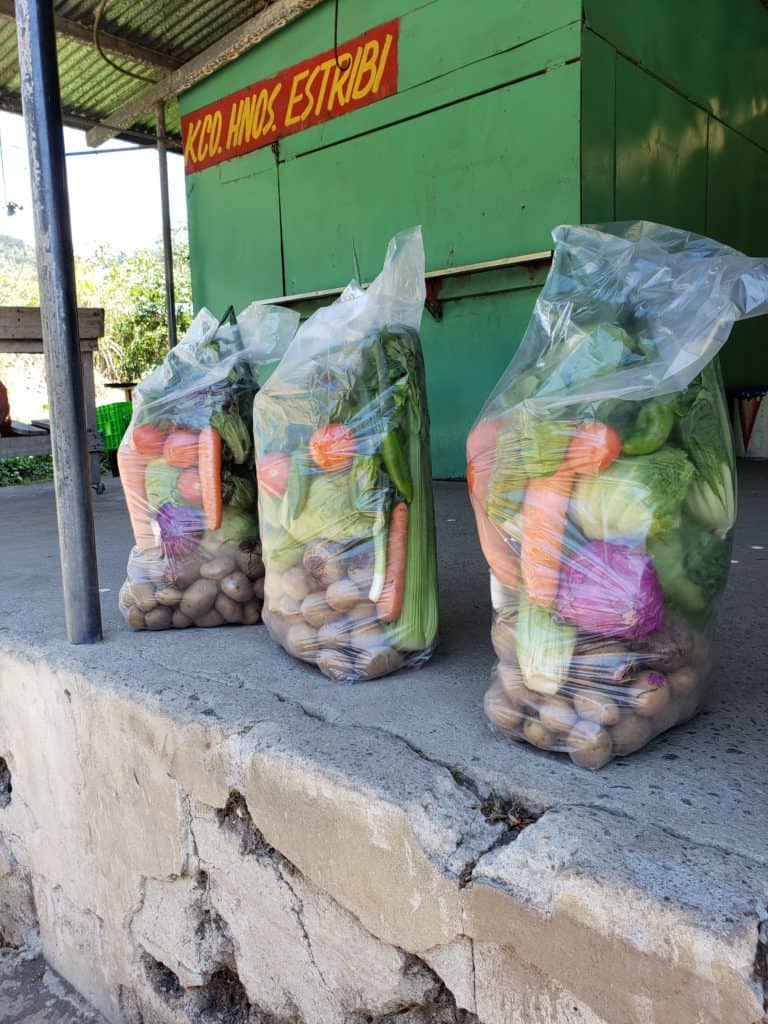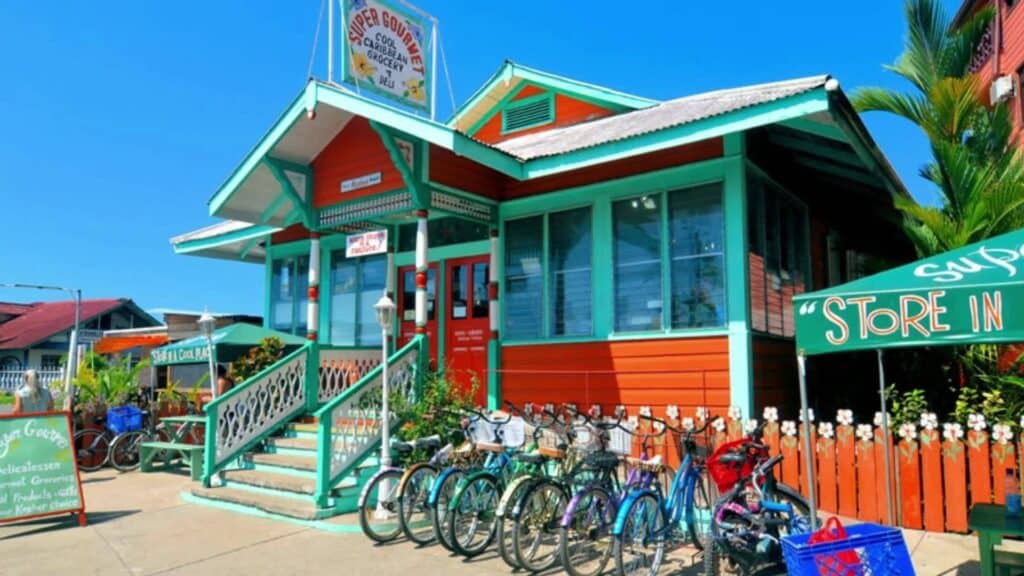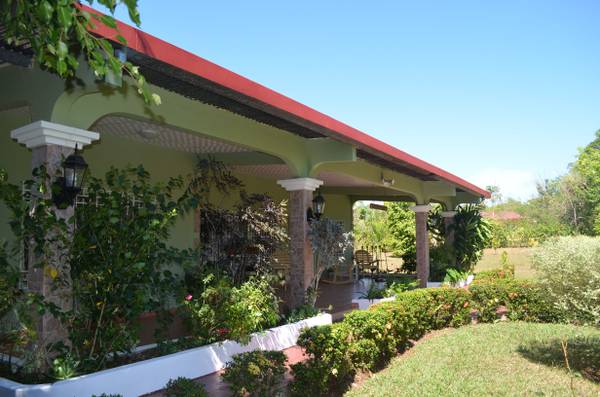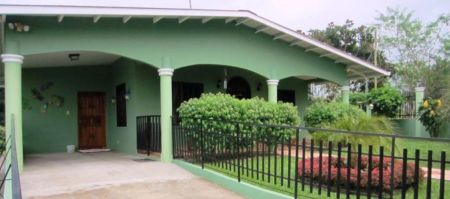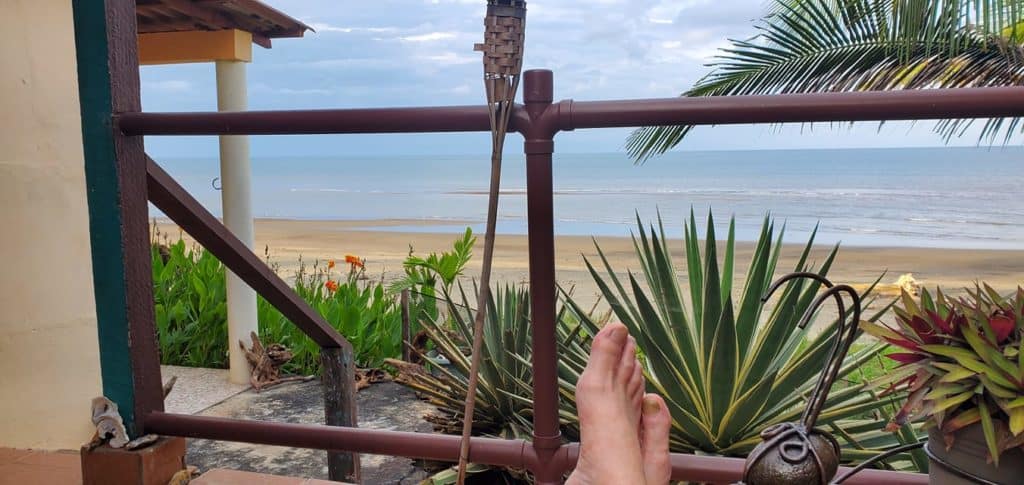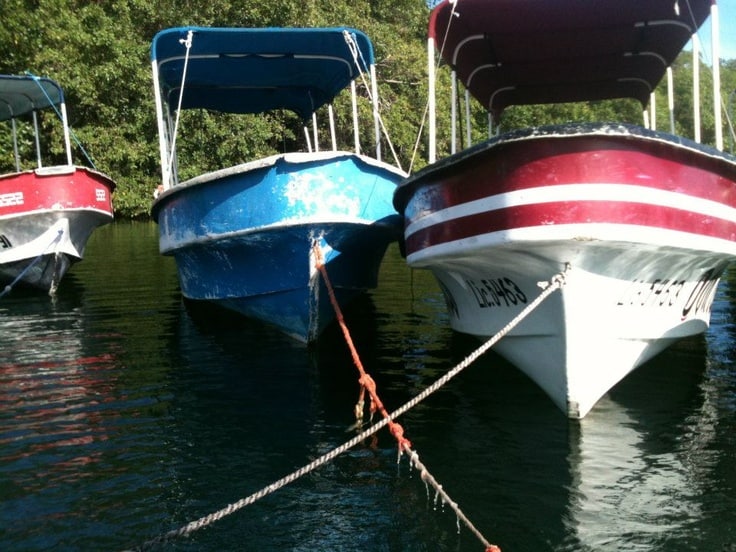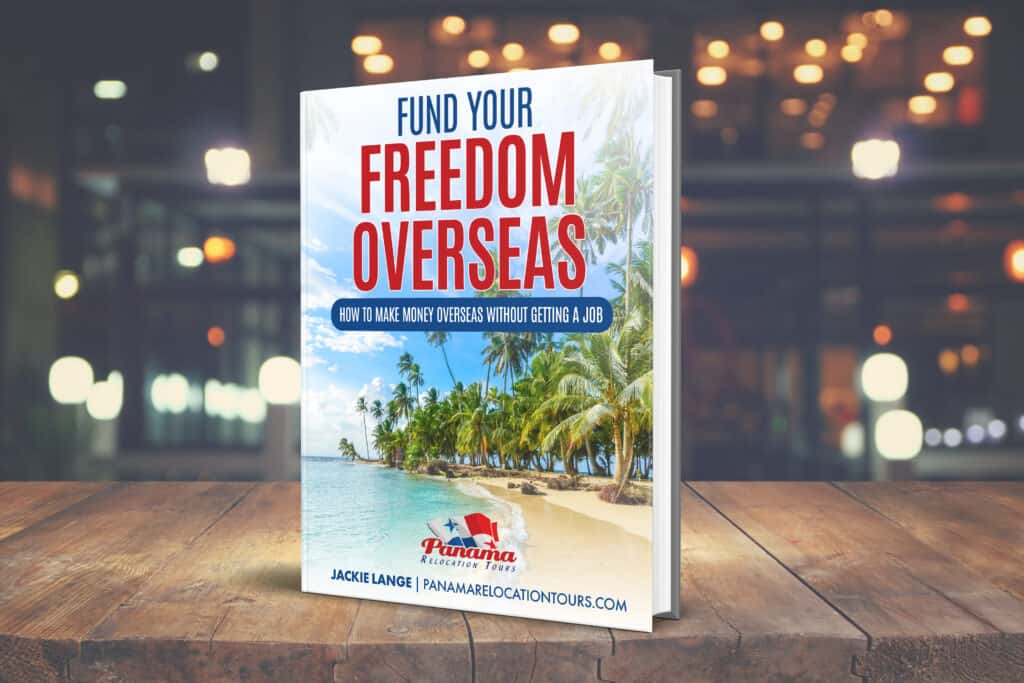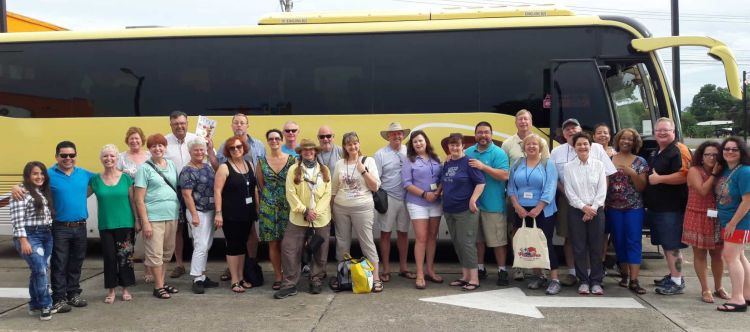
Living in Panama
– a Quick Guide
for Expats (2024 Edition)
Living in Panama can be a truly wonderful experience! You can enjoy amazing weather & spectacular scenery without having to give up all of the comforts you are used to from home. And the best part: You can do this while substantially reducing your cost of living.
I put together this Quick Guide to living in Panama to introduce you to Panama and all of the major topics you’ll want to know before considering a move there. Since 2010 we have been operating Panama Relocation Tours and have helped thousands of people move to Panama.
We’ve been asked and have answered every question there is to know about living in Panama and have written over 250 blog posts on the topic. This guide is my attempt at putting an overview of all that information in one place.
Learn more about Panama Relocation Tours.
Ready to move to Panama? Check out our Complete Panama Relocation Guide.
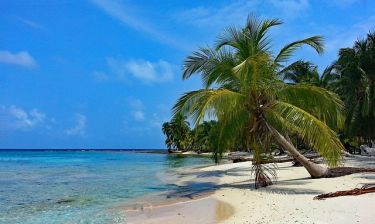
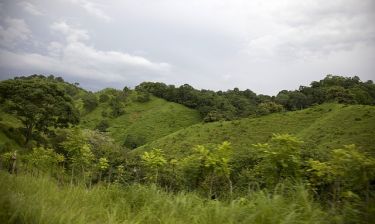
Is Living in Panama For You?
You may have heard that Panama has become one of the most popular expat destinations in the world. Panama is consistently ranked as one of the best places to retire by International Living.
Panama has great weather and a comfortable lifestyle at costs much lower than where you may be living now. Panama also helps encourage foreigners to move there by offering generous tax breaks and other incentives through their Pensionado visa program.
Does this mean you should pack your bags and jump on a plane today? Probably not… a hasty decision can lead to wrong choices and disappointments. This Quick Guide to Living in Panama was written to help prevent you from making a potentially costly mistake.
Considerations in a new home will be quite different for a retired couple than for a young family with school-aged children. Your reasons for making a move overseas will affect your choices as well. Are you looking for adventure and cultural experiences, or are you more interested in enjoying most of the comforts you are accustomed to but at lower costs?
There is much more to moving abroad than calling a moving company and hopping on a plane. No one place is a Shangri La. Panama has something for just about everyone, though.
Some of the things covered in this guide include banking and healthcare options, employment and taxes, language challenges, how to get around, visa options, buying and renting real estate, things to do in Panama, as well as descriptions of several of the top expat cities and a few of the more “off-the-radar” choices worth looking at.
This guide will provide an overview of the numerous options available for living in Panama, with suggestions that will help guide you to making the right decision for your future as a potential Panama expat.
You can read the guide from top to bottom or use the table of contents to skip to the part about living in Panama you are most interested in.
Why Live in Panama?
The most common reasons people choose to move to Panama are the cost of living, quality of life, amazing weather & natural beauty, health care quality & cost, established expat communities, and the ease of getting a residency visa.
Ask ten different expats why they chose to live in Panama, and you might get ten different answers. Everyone has different preferences and priorities. That said, listed below are some of the most common reasons for living in Panama.
Cost of Living
Many people move to Panama because they are getting priced out of their home country. Healthcare costs, taxes, and utilities keep increasing while their income stays flat or even goes down. Eventually, they realize that if they stay in their home country, they will have to work until they die because they’ll never be able to afford to retire.
To be clear – you won’t be able to live like a king in Panama for pennies. But if you are ok with a modest yet comfortable first-world lifestyle, a single person can live on $1,000 to $1,200 per month, or a couple can live on $1,500 to $2,000 monthly in some areas of Panama. Some areas, like Panama City, Coronado, or Boquete, would cost more.
Quality of Life
Just because the cost of living in Panama is lower than in other places, don’t think you’ll have to accept a lower quality of life. The Gallup Global Well-Being Index ranked Panama as leading the world in well-being for two consecutive years.
Panama has a stable, democratic political environment, first-world medical care, excellent highways, and telecommunications services.
Amazing Weather & Natural Beauty
The weather in Panama is nice year-round. It never snows, and the temperature rarely goes above 90°F / 32°C. Extreme weather & natural disasters are also rare. The weather tends to be hotter near the ocean in places like Panama City, Coronado, and Bocas del Toro – and cooler spring-like weather exists in mountain towns such as Boquete, El Valle de Anton, and Volcan.
Panama has truly amazing scenery with lush vegetation, miles of coastline, white sandy beaches, rugged mountains, dense jungles, and a seemingly endless variety of plants and animals.
Health Care Quality & Cost
Affordable health insurance and quality health care are other reasons people live in Panama. Exact prices will depend on your age and how healthy you are, but here are a few examples:
A 66-year-old recently purchased Panama health insurance for $117 monthly with no deductible. This insurance covers 85% of costs (already very low) and 100% if hospitalized. Health insurance is available regardless of your age.
A 50-year-old recently purchased international health insurance for $85 per month with no deductible in Panama and a $1,000 deductible for procedures outside of Panama.
A routine doctor visit without insurance is less than $20. If you go to a public hospital, the cost is only $2 to see a doctor. Many self-insure because the cost of quality medical care is so affordable.
Established Expat Communities
Foreigners from all over the world have discovered the beautiful, vibrant, and affordable lifestyle available in Panama. Some areas have a higher concentration of expats than others. Panama City, Boquete, and Coronado each have thousands of expats. It makes your transition easier if you live in an area with more expats because more English will be spoken.
You can also get involved in many activities, which will have other expats around. And areas with more expats tend to have more services and products you are familiar with. Some other parts of Panama have hundreds of expats living in the towns. When living in Panama, you won’t need to go far to find other people from your home country who have also moved to Panama.
Pickleball is popular throughout Panama!
Ease of Getting a Residency Visa
Panama wants you to move to Panama! The residency Visa process is a simple 3-step process so you can live in Panama indefinitely. The most popular Visa is the Pensionado Visa (for retirees).
The requirements for getting a Pensionado Visa are proof of a lifetime income of at least $1,000 monthly for one person plus an additional $250 for each dependent. You’ll also need to provide a national criminal report (like an FBI report) to get a Visa.
To get the Pensionado Visa, you should plan to be in Panama for five business days for the initial Visa application. You will walk away with a temporary Visa card. Then, about three months later, your permanent Visa will be ready. The next step is to get your national ID card, called a cedula. The costs for getting a residency Visa vary depending on which attorney you are using, but it’s usually about $1200 for one person plus an extra $200 for your spouse.
Unlike other countries, Panama does not require you to live in Panama once you get a Visa, but you must come back for at least one day every two years to keep your Visa active.
If you don’t qualify for the Penionado visa, several other visas are available, but many of them require a substantial investment in real estate or a business.
A New Adventure!
Last but not least – another common reason for living in Panama is simply for the adventure. Moving to a new country is a challenge, and it will definitely get you out of your comfort zone. But if you make the move, you’ll be rewarded with an incredible life-changing experience.
Geography & Landscape
Where is Panama?
The Republic of Panama is the southernmost country in Central America. It is an “Isthmus,” a narrow strip of land with sea on either side, forming a link between two larger land areas.
Panama has an east-to-west running orientation. It borders Costa Rica to the west and Colombia to the east. The Pacific Ocean forms the coastline along the country’s southern edge, and the Caribbean Sea is to the north.
Panama City, the capital of Panama and the largest city in the country is located in the center of the country.
The 10 Provinces
A province in Panama is similar to a state in the U.S. or a province in Canada. Each one is unique in some way. The provinces are broken down further into districts, which tend to be centered around the main towns, and then into smaller zones called “corregimientos”, which are usually smaller towns and villages.
The Republic of Panama recently added a 10th province called Panama Oeste (West Panama). It divides the original province of Panama, which surrounds Panama City, into an east and west side.
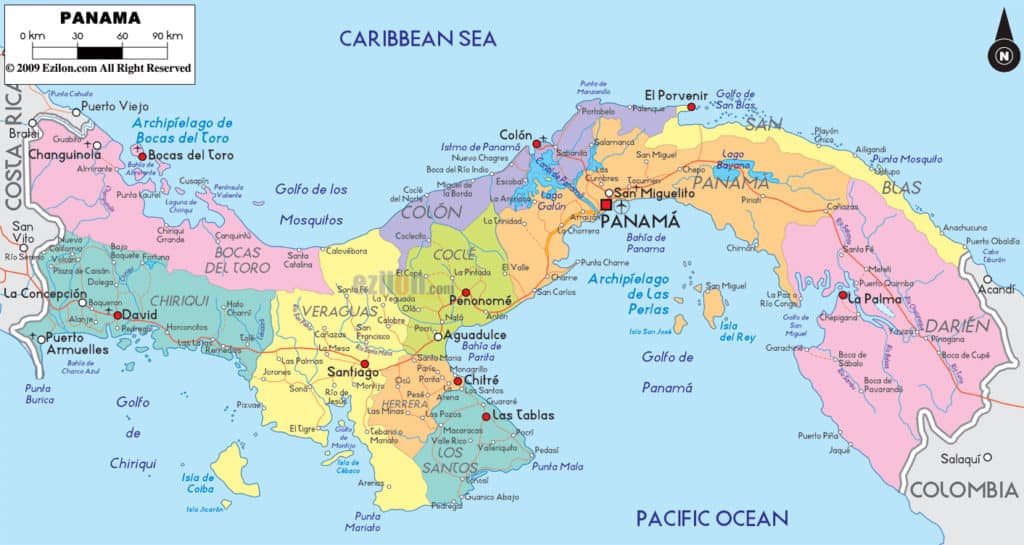
Sometimes, if you are driving or on a bus, you may come to border checkpoints when crossing into a different Province. Usually, you are asked to show your passport and driver’s license at these stops.
Following is a brief overview of the Provinces. This will help you narrow down where you might want to live in Panama.
Panama
This is where the capital, Panama City, is located. The largest population in the country is here, with over 1.5 million people in the metro area. You will also find the largest airport in Central America, Tocumen International Airport, the Panama Canal, and the country’s financial and banking centers.
It is a metropolitan city with high rises, plus all kinds of shopping, dining, and cultural activities. The old Spanish towns of Casco Viejo and Panama Viejo are also located in this province.
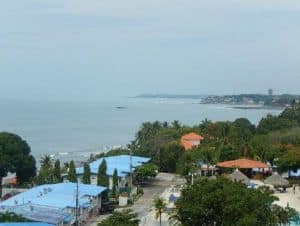
Panama Oeste
This is the area between the Panama Canal (Bridge of the Americas) and the province of Coclé. This area has a lot of new development as it is becoming a large middle-class suburb of Panama City. It includes the beach areas of Chame, Coronado, and Gorgona, as well as the mountain town of Altos del Maria.
Coclé
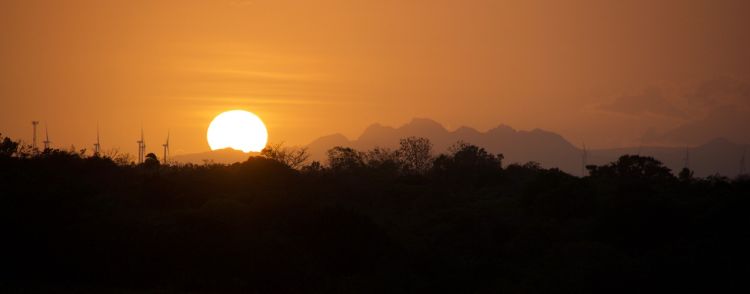
One of the drier provinces, Coclé, has an airport at Rio Hato Airport. Charter flights from Canada to Rio Hato are available. As more flights are added, it will help to bring growth to the area. Penonome and El Valle are two of the larger towns in the area. Penonome is where you can buy a “real” Panama hat! It is also where you will see the new windmill farms along the highway as you drive by.
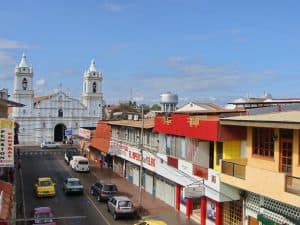
Herrera
Chitré is the main town in Herrera. It is a fairly modern town with plenty of shopping and other amenities. The small villages and towns in Herrera are predominantly colonial and known for their beautiful clay pottery.
It is the smallest of the provinces, about a 4-hour drive from Panama City on the Azuero Peninsula. This is an agricultural area where you will see fields of sugar cane and corn growing.
Los Santos
This province is a cultural hotspot of Panama and the Azuero Peninsula. It includes the town of Las Tablas, which is famous for its Carnival and traditional Pollera festivals. The beach town of Pedasi, which is quickly becoming a popular expat community, is also in Los Santos. Surfers have discovered the waves at a beach near the point called Playa Venao and Santa Catalina. An island offshore called Isla Iguana is becoming a tourist destination.
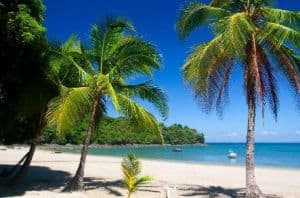
Veraguas
It is one of the largest provinces, including the western edge of the Azuero Peninsula and the famous Marine Park Coiba. Santiago is the capital city, which is located on the Pan-American Highway. This is a fast-growing region where a new Mega Mall and construction can be seen everywhere. The little town of Santa Fe is in the mountains above Santiago.
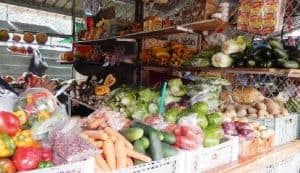
Chiriqui
Chiriqui is often referred to as the ‘breadbasket’ of Panama. The majority of the country’s produce is grown here. The Volcan and Cerra Punta towns are mostly agricultural highlands. The famous expat town of Boquete is in this region, where you will find some of the best coffee in the world.
Bocas del Toro
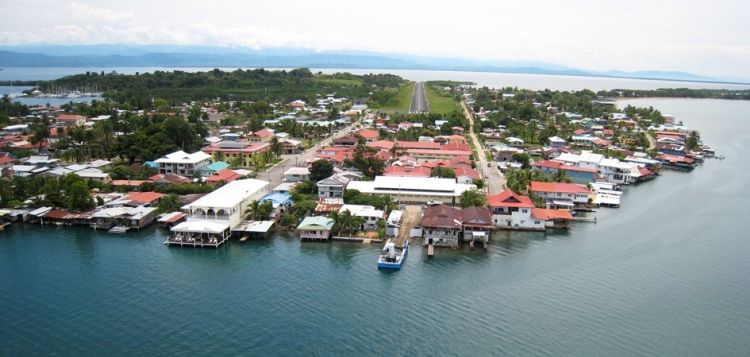
It feels like a different country in Bocas! Located on the Caribbean side and made up of an archipelago of 9 islands, there is a Caribbean feel that can be seen in the architecture and ambiance of the area. Most people speak English here, and there are plenty of tourists. It is somewhat of a backpacker and surfer crowd with many hostels and water activities galore.
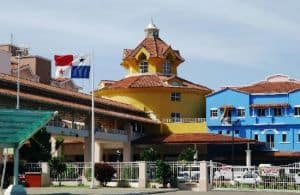
Colon
Home to the second largest free trade zone in the world, the Colon Free Zone, and located on the Caribbean side of the Panama Canal. This is a major commerce center for Panama. It is also a port of call for the cruise ships passing through. There are beautiful islands and beaches to explore. Portobello is located in this province.
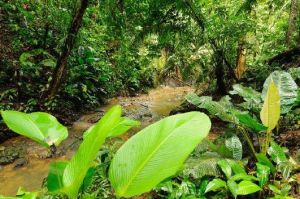
Darien
This is the largest but least populated of the provinces. The capital is La Palma. Most of the Darien is jungle, forming a natural border between Panama and Colombia. The Pan American Highway ends about halfway into the Darien Province, so you cannot drive to Colombia.
Cost of Living in Panama
The cost of living in Panama can be as low as $1,000 to $1,200 monthly for a single person or $1,500 to $2,000 for a couple. Your exact costs will depend on where in Panama you choose to live and your lifestyle and buying decisions. Some areas are more expensive than others.
Panama offers a more affordable lifestyle than most areas of the world. The natural beauty, fresh food, and diversity of scenery and activities make life more fun. Budgets vary depending on where you live in Panama. Some areas, like Panama City, Coronado, or Boquete, are more expensive. While other areas, like Volcan or Chitre, are less expensive.
I live in Boquete. I will share our typical monthly budget. But understand that everyone’s lifestyle differs, so budgets will vary considerably. The biggest determining factor in your budget will be housing costs. Before my husband and I bought our house, we paid $600 monthly rent (the same house currently rents for $750), so I will base the budget on that rent.
| Category | Cost |
|---|---|
| Rent | $750 |
| Groceries | $300 |
| Electricity | $25 (near the beach will be 4x more) |
| Health Insurance for two | $175 |
| Dentist and Doctor Visits | $10 |
| Prescriptions when Needed | $10 |
| Netflix | $10 |
| Internet & Cable TV | $60 |
| Clothes and Shoes | $30 |
| Entertainment and Eating Out | $50 |
| Travel | $100 |
| Gardener and Maid | $100 (large property) |
| Car Insurance and Maintenance | $50 |
| TOTAL | $1670 |
If you pay more in rent, your cost will go up accordingly. If you live at a lower elevation where air conditioning is needed, your electric bill will likely be four to five times more. But even with these expenses, you can see that a couple can live comfortably for less than $2000 per month if you are in a $750 rental.
General Information About Panama
The official name of the country is the Republic of Panama.
Population (according to the last UN estimate): 4,194,773. More than 70% of the population lives in the urban cities, mostly Panama City, David, and Colon, the highest percentage in all of Central America. About 12% are indigenous people.
Life Expectancy: 77.37 years
Language
Spanish is the official language of Panama. Because English is the international language of business and banking, Panama City has a higher percentage of English speakers. There are also areas around the country, like Boquete and Coronado, where large numbers of expats have settled, and there is, naturally, a higher English prevalence in these areas.
As you travel into the country’s interior, heading west and away from Panama City, there are fewer English speakers in most rural towns. Bocas del Toro has an interesting English, Spanish, and Caribbean Creole mix.
As with any country, it is best to try at least to speak some basic phrases in the native tongue if you will be living in Panama. There are some great online courses, like Doulingo, that can teach you a new language if you are willing to take the time to learn. Spanish is not considered a difficult language in comparison to English.
If you are an English speaker, you’ve already mastered one of the hardest languages to learn! There are several Spanish schools and private tutors available in Panama. Immersion into the culture is reported to be one of the fastest ways to learn a new language!
Time Zone
The time zone in Panama is Eastern Standard Time (GMT-5). This means the time in Panama is -5 hours from the Universal Time Coordinated (UTC), which used to be called Greenwich Mean Time (GMT). Greenwich, England, is the ‘ground zero’ of the world time clock.
What is the old saying “Spring ahead, Fall back”? Forget about it ~ there is no Daylight Savings Time to worry about!
So, even though Panama’s time does not change, the time zones in North America do, which causes the time zones to differ between the two countries. In the winter, Panama is the same time zone as EST or Eastern Standard Time. Panama’s time matches up with the CST or Central Standard Time in the summer.
Measurement & Distances
The metric system is used in Panama, like most countries. If you come to Panama from the United States, you must learn the metric system. For example, gasoline is sold by the liter, not the gallon.
Approximations are simple to learn:
- Length is measured in Meters. 1 meter = slightly more than 1 yard
- Speed and Distance are in Kilometers. 1 kilometer = a little more than 1⁄2 a mile
- Weight is in Kilograms. 1 kilo = about 2 1⁄4 pounds
- Gasoline is sold by the Liter. 1 liter = a little more than a 1⁄4 gallon
Once you start using the metric system, the conversions will become automatic.
Soon you will be thinking metric all the way!
Communication Services
Cell Phones in Panama will require a local SIM card or eSIM. If you have a phone that does not use a SIM card, you can buy a phone in Panama for as little as $50. US phones with SIM cards must be “unlocked” for use in Panama. Once you arrive in Panama, you can purchase a SIM card from one of the mobile carriers for about $5. They will assist you in changing and setting it up; then you can purchase talking minutes as you use them. You can also prepay for a data plan without a contract. Cell phone reception is very good throughout most of the country. I pay $30 a month for my cell phone service, which includes unlimited calling and data. I can even call other countries with no additional fee. And my cell phone works when visiting other countries, with no additional fee.
Internet Service is another widely available product with numerous options in Panama. TIGO, or Cable and Wireless internet service, is about $30 monthly. Speeds range from 100 to 600 Mbps. The speed is fast enough to stream movies easily.
Many people get internet service through their cell phone provider and use the phone as a ‘hot spot’. In most cities in Panama, you can also find many cybercafés where you can pay per hour or minute to use a computer with Internet access. Many hotels, cafes, restaurants, malls, universities, and airports will offer free Wifi.
Be sure to download WhatsApp! It’s free! WhatsApp is the primary way to make calls, send messages, and share photos or documents in Panama. You can get Whatsapp on your cell phone and your computer.
In rural areas, your internet service provider choices will be limited and much more expensive. Expect to pay $100 per month for 10 Mbps of speed. Or plan to get Starlink – it works great in Panama.
T.V. and Movies are available in English and Spanish by a few different means in Panama. There are Cable TV services that have access to movie channels around the world.
Many expats prefer to get an Amazon Firestick to use to watch their favorite shows, sports, or movies. You’ll have access to Amazon Prime, Netflix, and Apple TV, though you may need a VPN to access them in Panama. Where there’s a will, there’s a way, and the ex-pats who came before you have figured out how to get their favorite shows and movies.
Water & Electricity
Panama uses 120 volts AC, 60Hz. Outlets are the same flat two-pin type you find in the United States. Typically, electric service is reliable, though it could go out during a thunderstorm.
Tap water is considered safe to drink throughout the mainland of Panama. However, standards may not be the same as your home country. If you decide to move to the islands, it is best to drink only bottled water.
Weather
Panama is located about 8 degrees (600 miles / 900 km) above the equator and is categorized as a Tropical Monsoon Climate. Fortunately, the country is located below the hurricane belt and is not directly affected by them other than stormy weather.
Elevation and proximity to the oceans are the primary factors affecting local weather. Coastal areas, on the north and south, generally experience higher humidity, while the mountains running down the center of the country remain less humid and more temperate.
Panama has two main seasons: la seca (“the dry”) from December through April and la lluviosa (“the wet”) from May through November. On average, Panama receives about 106 inches (269 cm) of rain yearly. During the latter part of the wet season, heavy afternoon downpours and thunderstorms are the norm, and rain falls almost every day.
Daytime temperatures are consistent, remaining in the 85°F (30°C) range regardless of season. The coolest temperatures in Panama are found in the Cordillera Central Mountain range at 6600 feet (2000 meters) above sea level. The temperature drops about 10 degrees in the evening.
You can pick your ideal temperature based on the elevation in Panama. At sea level, the average temperatures are 85 – 90 degrees Fahrenheit. The temperature drops 4 degrees Fahrenheit per 1,000 feet increase in elevation. For example, in David, it may be 90 degrees, but drive 30 minutes to Boquete, which is at 3,500 feet, to experience 76-degree weather. If that’s too cool for you, move to a lower elevation. What’s your ideal temperature?
Additional Reading:
Things to Do
Panama now has a rapidly developing tourism industry. Until fairly recently, almost all of the tourists visiting Panama visited only Panama City. A large number come by cruise ships that go through the canal, allowing passengers to disembark in Panama City or Colon. Of course, there are some amazing attractions in the capital city. The growing number of more adventurous visitors will find a variety of unspoiled natural sights and adventures if they venture into the ‘interior.’
The number 1 attraction is the world-famous Panama Canal. Considered one of the top 10 Man-Made Wonders of the World, it is truly a sight to behold when you watch the gigantic container ships traverse through the locks.
The recently opened Bio Museo is a sight that catches your eye when you first glimpse the colorful architecture. Eight galleries tell us about the origin of the Panamanian isthmus and its gigantic impact on the planet’s biodiversity.
Take a trip down a river in a dugout canoe to visit an indigenous tribe on an Embera’ Village Tour. See what life is like in these remote villages deep in the Darien jungle. Get a temporary tattoo, buy some souvenirs to take home, and enjoy a traditional lunch served in a plantain leaf bowl.
Diving and snorkeling are popular sports, especially in the Marine Parks at Isla Coiba on the Pacific and Bastimentos in Bocas del Toro.
Whale and Dolphin Watching Tours are becoming one of the most popular attractions in Panama. One company recently told me that they have had 100% views of whales on their tours for the past two years! The best time of year is during the peak season between July and October.
Bird Watching is some of the best in the world in Panama! Did you know there are over 900 species of birds in this tiny little country? Some very exotic species can be seen if you are observant.
Deep Sea Fishing in Chiriqui Bay has been featured in International Fishing magazines. A deep drop-off is close to shore, so boats don’t have to travel far to catch Marlin, Tuna, and other deep-water fish for dinner. Pedasi is another popular fishing area.
There are hiking trails all over the country and on the numerous islands around Panama. Be prepared to spot monkeys, sloths, and crocodiles as you adventure into the jungle (and watch for snakes!).
There are adventurer seeker Zip-Line rides over the jungle canopy in many parts of Panama. They are in Bocas del Toro, Boquete, El Valle, and the Darien.
Fabulous surf can be found along Panama’s Pacific Coasts and the Caribbean. There are even international surfing contests conducted annually!
Some communities have golf and tennis. Many communities have live music and dancing at local bars or restaurants on the weekends. You can usually find card games and Mexican Train in expat communities.
Many expats enjoy getting involved in their community, volunteering at spay and neuter clinics, making quilts for newborns, teaching English at schools, and finding homes for stray animals.
Health Care & Health Insurance
Looking for comprehensive information about health care and health insurance in Panama? Check out our Complete Panama Relocation Guide. It includes recommended health care providers and insurance companies.
US News & World Report states, “Health care in Panama is of an international standard”. Talk to any expat living in Panama about their experiences with healthcare here, and you will get overwhelmingly good reviews. Most doctors at the hospitals in Panama have been trained in the U.S., and many speak English as a result. Punta Pacifica Hospital in Panama City is the only hospital in Latin America affiliated with Johns Hopkins International.
A friend of mine had to get emergency medical surgery in Panama last year. Her sister, a nurse from California, rushed over to be by her side (concerned about the hospital conditions in Latin America) and remarked that the equipment in the Panamanian hospital was more modern than the hospital she worked at back home. And the level of service was extraordinary. It’s common for a doctor in Panama to give a patient his cell phone number!
My own experiences have been similar. Shortly after moving to Panama, I had severe ear and sinus pressure. I visited a doctor in Boquete, who thoroughly examined and prescribed antibiotics and ear drops for my infection. He then gave me his cell phone number in case I experienced any other problems, and the bill was only $10!
Another more serious issue sent me rushing to the emergency room at Hosptial Chiriqui in David. I had severe pains in my lower right side and feared that my appendix had ruptured. I was seen immediately upon arrival. Blood and urine tests were taken, and an IV was started with pain medication. A surgeon was called in case he might be needed, but fortunately, surgery was unnecessary. The TOTAL cost for the emergency room visit, standby surgeon, all tests, and medication came to a whopping $119.80. I didn’t even use my insurance card!
Because medical care costs are so affordable, many ex-pats in Panama choose to “self-insure,” meaning they pay for their services and don’t buy health insurance. The cost of health insurance in Panama is also very inexpensive, though. A wide variety of plans are available for expats, and we go over these options during Panama Relocation Tours and in our Complete Panama Relocation Guide.
My plan costs me $117 per month, covering 85% of all non-emergency costs. Emergencies are covered at 100%. I previously had international health insurance, but the cost was substantially more. I know people in the U.S. who pay over $900 for insurance for ONE Month!
Medicare Advantage can be used for urgent care or emergencies in Panama. You must pay upfront and then file a claim to be reimbursed.
US Veterans can receive medical care for service-related disabilities. See this information about Veteran medical benefits in Panama.
As in most countries, there is no shortage of pharmacies in Panama. When you need medication in Panama, you may find it easier than in your home country! Most medications are available over the counter in Panama, which would require a prescription in the US or the UK. Because the typical Panamanian cannot afford to pay a lot of money for a prescription, the cost of medications is about a third of what they cost in the US.
If you have a Pensionado visa Card, you can receive another 20% off the price!
Affordable healthcare and top-notch medical services are some of the biggest money-savers and benefits of being an expat in Panama!
Best Places to Live in Panama
Panama’s best places to live are Panama City, Coronado, Boquete, El Valle de Antón, Pedasi, Chitré, David, Volcan, Bocas del Toro, Santiago, Bugaba, and Dolega. Each city has pros & cons, and the best one will ultimately depend on your needs & preferences.
I’ve given you a basic overview of what living in Panama may be like and what is available here. Now, it’s time to start checking off some boxes of what you want in your new home with an overview of some of the most popular and some of the less well-known towns and areas to help narrow your search a bit more.
The list is divided into two groups:
Popular Expat Areas – These include most of the towns you may have already heard about or read online. Panama has had a steadily increasing community of expats in pockets nationwide for the past ten years. Some of these neighborhoods and towns have a well-established networking group, community events, and activities, and they tend to have more of the amenities you may be used to from back home.
The larger areas will possibly have an international school nearby. Usually, they are near the larger hospitals and supermarkets and have a greater variety of restaurants. There will be a larger population of English-speaking expats and locals, so if you find learning Spanish difficult, you may be more comfortable where you can communicate easily. These are all comforts that expats are used to and have re-created, to some extent, in their new home.
Because of this, the prices for real estate, dining out, and other items will tend to be higher in these areas. When it comes to price, there is a give and take in most areas. You have to decide what you MUST have in your life to be comfortable and happy, whether it is a golf course down the road or your favorite deli items in the supermarket, and check off the places where you don’t think you’ll find your peace and freedom overseas. You’ll start to pinpoint the spot that is waiting for you!
Undiscovered Local Towns – Some places on this list may be new. They offer a very different kind of freedom. What they lack in amenities, they usually make up for in natural beauty and local culture. Fewer expats live in these areas, and the predominant language will be Spanish. If you can’t speak the language, be prepared to become immersed! I think it is the fastest way to learn.
There may not be any fancy restaurants or an international school nearby, but Panama is a small country, and it is never more than about a 30-minute drive to get something you need. Life in these towns tends to be pretty basic. The word in Spanish is “Tranquilo”.
If you want to stretch your dollars, you will find $4-$5 Panamanian lunches, and a simple house can cost less than $500 a month. If you can live without daily spa visits and enjoy peace and simplicity, you may find your dream home in one of these spots.
Popular Expat Areas
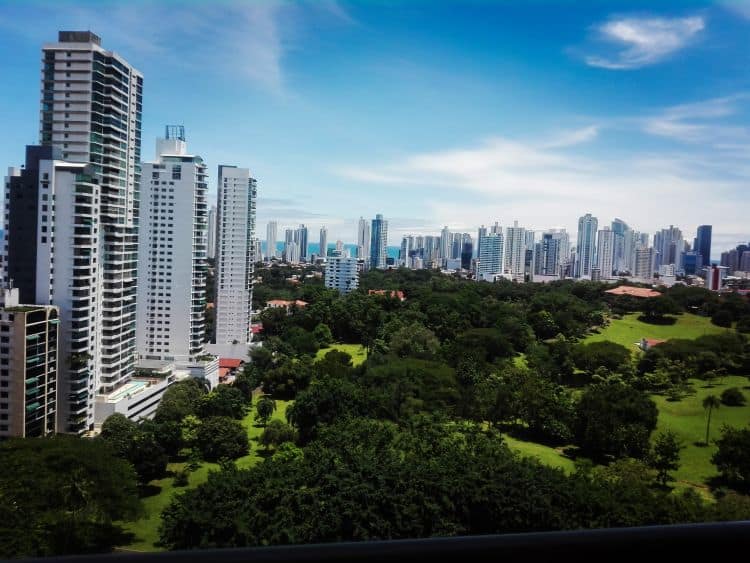
Panama City
If you enjoy city life, Panama City is the place for you. It is a noisy, cosmopolitan metro with almost nonstop activity. Panama City is home to the Panama Canal and the largest International Airport in Latin America. More and more names you are probably familiar with, like Hard Rock Hotel, JW Marriott, TGIF, PF Chang, Olive Garden, and even Starbucks Coffee, can be found here. It is not a huge city by North American standards, with a population of around 2.5 million, but it has almost everything you need.
There are constant cultural and musical events and festivals to attend. You will never get bored in Panama City! International events in Panama include an annual Jazz Festival and even a Beer Fest! Fine dining and ethnic cuisine are abundant, along with several giant shopping malls, boat harbors, nearby golf, museums, and theatres.
Many expats I know in the city use public transportation to get around. Parking and driving can be a nightmare, and it is usually not more than $3 to get from point A to point B in the city. There are many good grocery stores with everything from organic to kosher. Minimal culture shock should be experienced when moving to Panama City.
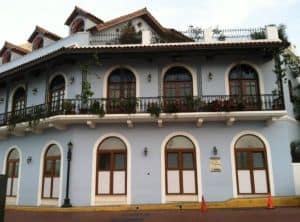
The real estate will be mostly condos, with a few beautiful single-family homes in neighborhoods like San Francisco. One friend of mine rents a furnished ocean-view two-bedroom condo for $1200 monthly.
A couple of the more popular expat areas are El Congrejo, where prices are slightly lower, and Casco Viejo, where prices have skyrocketed over the past few years. Living in this eclectic Casco Viejo part of town will cost considerably more. Many crumbling old buildings have been purchased and refurbished, turning the area into an art and cultural center and popular tourist destination.
There has been tremendous growth throughout Panama, with new neighborhoods, roads, hospitals, airport expansions, and much more. This growth is expected to continue in Panama.
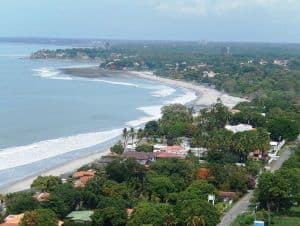
Coronado & Nearby Pacific Beaches
Playa Coronado was one of the first Pacific Coast beaches to develop a large expat community. Only about an hour from Panama City, over the Bridge of the Americas, it is close enough to visit the city to attend an occasional event.
Coronado is a gated community at the beach with an international school and plenty of nearby shopping and dining. Nothing near the scale of Panama City, but enough to keep one satisfied. There is golfing and a nice beach to walk, swim, or go surfing.
Prices in Coronado are not low unless you compare them to Malibu, California, or Hawaii. A nice home or condo can easily be $1500 to $2500 or more.
Beach communities west of Coronado are more affordable. Playa Blanca offers a nice furnished two-bedroom condo with an ocean view for $1000.
Coronado and the surrounding beach communities have the second-largest expat community in Panama (Panama City is #1), so you won’t have a problem speaking English here.
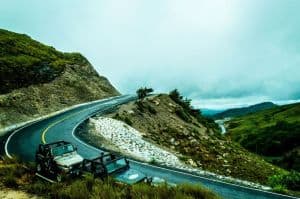
El Valle de Antón
Heading north from the beach towards the mountains in Coclé, you have to drive up a winding picturesque road and then down into the caldera of a dormant volcano to find El Valle de Antón.
Because of its higher elevation, El Valle has a pleasant year-round climate. It is about a 2-hour drive from Panama City. El Valle is a popular second home location for wealthy Panamanians from Panama City, who go here occasionally to escape the city’s heat.
Beautiful homes are in this upscale area, and you will find resorts, spas, and fine dining. Weekends can be a little busy with visitors.
The natural beauty, abundant birds, and other wildlife make this area a nature lover’s paradise. It is one of the few homes of the endangered Golden Frog. There are numerous hiking trails and waterfalls where you can take a dip. Even replenish your soul in a natural thermal hot spring!
Finding a good rental for less than $1200 in El Valle is hard. It is a luxury lifestyle in a resort-type setting. You’ll need to drive to Coronado or Penonome to get to a hospital, good shopping or private schools.
Pedasi
Pedasi is a tiny town with a growing expat population in recent years. There are several beaches within a 10-40 minute drive. Fishing is excellent in Pedasi. Las Tablas and Chitre’ are the closest towns for shopping and other services. There are a few decent restaurants and small hotels in Pedasi. Otherwise, there is not a lot in the way of amenities.
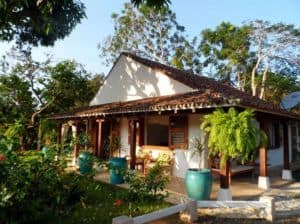
They have occasional issues with water, so a catchment and storage tank might be a good idea here. The atmosphere is laid back.
Prices are much higher in Pedasi than in nearby Las Tablas or Chitre. Pedasi has become more expensive in recent years.
Chitré
Chitre’ is the largest city on the Azuero Peninsula, home to about 60,000 residents, and one of Panama’s oldest settlements. Colonial records indicate that there was a village here as early as 1558. Today, it is one of the most developed cities in Panama.
A combination of rich history and modern amenities make Chitre’ an attractive place to live today. This is one of the driest regions in Panama, and the closest beach, Playa Agallito, is about 15 minutes from town. The beaches along this peninsula stretch are known for birdwatching and nature preserves.
The city is also the cultural and historic capital of the region. It is a very lively place during the yearly carnivals! Some of the best artisan clay pottery is found in the area, and pieces dating back to 5000 BC can be seen in the local Herrera Museum. A focal point of Chitré is the San Juan Bautista cathedral, built in the 18th century.
Chitre has the largest and most modern public hospitals in the Azuero peninsula.
Even with all the modern amenities, life is relatively inexpensive in and around Chitré. There are many homes for rent for $500 to $ 700.
Chitre has a golf course that is only $100 monthly for unlimited golf.
There are several private schools in Chitré, including the Colegio Agustiniano, a Roman Catholic private school, and International Saint George school.
Chitre is an up-and-coming area of Panama and, in the past year, has seen some major developments in terms of shopping centers, banks, hospitals, malls, and other large developments.
David
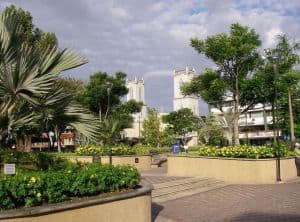
David is located in the Chiriqui Province in far western Panama. It is where the outlying townspeople make their occasional trek for shopping. You can find almost anything in this town, including traffic reminiscent of Panama City! There always seems to be a flurry of activity in David.
There are popular fast food restaurants, like Wendy’s, Pizza Hut, and Mcdonald’s, which feel like a treat if you only go once every few months!
David is home to a small airport offering domestic flights to Panama City. There is also a small marina on the coast. David is one of the hottest cities in the country, so you’ll need air conditioning if you live in David!
There are several shopping centers, a Pricesmart (like Costco), and two large malls in David. David has two large private hospitals and a large public hospital, too.
In David, a large expat community is spread throughout the city and suburbs. Some of the best medical facilities in Panama are in David.
Rentals are very affordable in David. You can get a nice furnished two-bedroom house for less than $500 monthly.
Boquete
Ahhh, Boquete! The high altitude and pleasant year-round weather are only a small part of the picture.
The expat community is active in this little mountain town. There is live music in multiple venues several nights each week.
Located 30 minutes up the mountain from David, you are close to major hospitals, schools, and shopping. Ten years ago, Boquete was a sleepy little town where retirees began to come for the climate and cheap real estate. Today, low prices are a lot harder to find in the area.
Boquete is now considered a top retirement destination and is priced accordingly. Affordable rentals are difficult to come by these days.
Boquete has several gated communities with upscale rentals starting at $1500+. There are two golf courses in Boquete, both inside a gated community. Outside the gated communities, you can find a furnished two-bedroom rental for $800+ monthly.
Restaurant prices are much higher in Boquete than in other highland towns.
Boquete has no hospital, so you must go to David for a medical emergency. There are several doctor’s offices in Boquete for routine medical care.
Volcan
Volcan is the place to get in on a location many say reminds them of Boquete 15 years ago. Volcan is at a similar altitude to Boquete, with pleasant weather and abundant natural beauty.
You won’t find any high-end gated communities or golf courses in Volcan. But you will find an affordable, friendly, laidback town with all the necessary amenities! Volcan even has a 24/7 public hospital.
Volcan is still a more rural mountain town, though it is growing in popularity quickly as many retirees feel they’ve been priced out of Boquete. You’ll find a tranquil lifestyle only about an hour’s drive from David.
Most of the produce in Panama is grown around Volcan and Cerro Punta. See the photo below of the $5 bags of produce available near Volcan. You will never have a shortage of fresh veggies.
The expat community has a weekly Farmer’s Market, so you can get organic produce, aquaponic products, home-baked goods, and crafts. There are many excellent grocery stores.
Restaurant prices in Volcan are 30-50% less than Boquete’s.
Volcan offers a peaceful, country lifestyle that is only a short drive away from the conveniences of the city, hospitals, and schools. Expats have recently discovered Volcan, so it will not be long before new restaurants and cultural activities exist.
Prices are in a wide range here, but you can find very good deals if you take the time to research the area. A furnished two-bedroom rental with all utilities included will be about $500 in Volcan.
Bocas del Toro
Besides Colon, Bocas del Toro is the only major town on the Caribbean side of Panama.
It feels separate from the rest of the country; truthfully, it feels like you are in another country in Bocas. Bocas is unique! To get to Bocas, take a plane from Panama City to the main island or drive 3 hours over the mountain from David to get to Bocas del Toro, then take a water taxi to the islands.
You’ll find that almost everyone speaks English in this area, a population mix of Panamanian, Indigenous Indian, Caribbean, and a large community of expats.
Bocas is a water town. Most of the people and activities are located on one of the islands that make up the archipelago, with the capital, Bocas Town, being on the island of Isla Colon (not to be confused with the city of Colon).
Transportation from the mainland or between islands is via water taxi, or “pangas.” A strong tourism market here revolves around beaches, nature, and boating activities. It is a popular backpacker destination, so the main towns have several hostels, hotels, and clubs.
There is a new 24/7 public hospital on the main island of Isla Colon.
There is a Caribbean influence in the architecture and laid-back attitude of life in Bocas, where you can shop at an organic market in the morning and take yoga classes in the afternoon. However, one drawback is that it is isolated from the rest of Panama. There is a small hospital and schools, but prices are higher here since everything has to be shipped in.
Real estate has a big range in price so you have to search for a deal. A one-bedroom furnished rental with a view of the Caribbean Sea will cost about $500 – $700.
Undiscovered Local Towns
Santiago
Santiago is a large city by Panama standards. I mention it under the ‘undiscovered’ heading because it still has relatively few expats living in the area. Most people driving across the country on the Pan American Highway will stop in Santiago, right on the main highway halfway between David and Panama City, to get a bite to eat or buy souvenirs at the numerous vendors and local handicraft shops.
Over the past few years, I have watched major construction projects and growth in this lesser-known expat destination. There are several good restaurants, hotels, and supermarkets in town. The Santiago Mall, a mega shopping complex, recently opened with dozens of stores and dining choices.
This is a convenient and central location for the country of Panama, and you can find affordable housing in and around the town. A furnished two-bedroom rental will be about $400 a month. I know an expat who rents a furnished two-bedroom house for $275 in Santiago. He has a lot of fruit trees in his backyard.
You must learn more Spanish to live in Santiago because few Panamanians speak English there.
Dolega
Dolega, a charming district in the Chiriquí Province of Panama, presents a fascinating blend of tranquil rural living and developing urban amenities. Situated strategically between the bustling city of David and the popular highland town of Boquete, Dolega serves as a vital connection point in the region.
The district is renowned for its serene and picturesque environment, offering a refreshing contrast to the more tourist-oriented areas nearby. Dolega’s climate is notably milder than the hot lowlands but not as cool as the higher elevations of Boquete, making it an ideal location for those seeking a temperate climate.
Agriculture plays a significant role in Dolega’s economy, focusing on crops like coffee, citrus fruits, and various vegetables. This agricultural heritage is evident in the lush green landscapes and the occasional farmer’s market, where locals and visitors can enjoy fresh, locally grown produce.
In recent years, Dolega has seen a gradual increase in expatriate residents, attracted by its affordability, climate, and proximity to amenities in David and Boquete. This influx has led to a steady growth in infrastructure and services, including better roads, small businesses, and healthcare facilities.
Despite its growth, Dolega retains a sense of a close-knit community where traditions and local customs are celebrated. Festivals and community events are common, often featuring music, dance, and local cuisine, providing a glimpse into the rich cultural tapestry of the area.
For those seeking a blend of peaceful rural life and accessibility to modern conveniences, Dolega offers a unique opportunity to experience the best of both worlds in Panama. Its strategic location, natural beauty, and growing community make it an increasingly popular choice for locals and expatriates.
A furnished two-bedroom rentals are available for less than $400 in Dolega. It’s warmer in Dolega so that you will need air conditioning. The photo below shows a three-bedroom, two-bath house for $580 in Dolega.
Bugaba
Bugaba is the hub of the farming and agricultural lowlands in Chiriqui.
It’s a mid-sized town with a “Caballero” (cowboy) feel. If you enjoy horses and rodeos, this could be a perfect location to investigate further. It’s about halfway between the border of Costa Rica and David, 30 minutes either way and right on the Pan American Highway. This puts good hospitals and additional modern conveniences only a short drive away.
There are not a large number of expats in the area, so prices are still very affordable. You can find a furnished two-bedroom house for about $300/month in Bugaba. I know a couple who lives in a nice $ 177-a-month rental in Bugaba. (That’s not a typo)
Many small farms in the outlying areas would be perfect for growing produce or setting up a gentleman’s estate. A nice, comfortable lifestyle can be had in Bugaba, and it is not a far drive for an occasional visit to Costa Rica, Volcan, David, or the nearby beaches.
Bugaba has several healthcare facilities, including clinics and pharmacies, ensuring that basic health needs are met. For more specialized medical services, the nearby city of David offers a broader range of healthcare options.
Reflecting its agricultural roots, many restaurants in Bugaba offer traditional Panamanian cuisine, often made with locally sourced ingredients. A typical meal will cost $5 per person and include a beverage.
Real Estate & Rentals
Get our list of trusted real estate contacts in Panama. It’s included in our Complete Panama Relocation Guide.
Anyone can own property in Panama. Foreigners have the same property rights as Panamanians. You do not have to be a resident of Panama; you can even purchase real estate as a tourist not living in Panama. The challenge is finding a property you like and paying a fair price.
There is not currently a well-functioning real estate listing service in Panama. That means there is no central location to find real estate or compare sales in a given area to see if a price aligns with the neighborhood. One real estate company is usually only aware of the properties listed with his company and in the general area where they’re located. They may have reliable area information to share with you. However, you may miss out on seeing properties not listed with his company or any realtor.
You should not limit yourself to a single real estate agent or search method for this reason. Check local online and periodical classified sections in the area you are searching. Walk the neighborhoods you are interested in and talk to people.
The BEST deals are NOT listed with an agent; you will discover them by word of mouth!
Whether you find a property you like on your own or with the assistance of a realtor, you will need to hire your attorney to do a title search and draw up the paperwork for the sale. There are two forms of property ownership in Panama, with huge differences between them.
The first and best option is to buy “titled” property, which comes with a deed and has a “finca” number assigned to it. This is the most secure form of ownership.
The second ownership method is called Right of Possession, or simply R.O.P. They are VERY risky. Don’t sign anything or pay a deposit until your attorney researches the property. Many lawyers advise not to buy R.O.P properties.
Property taxes are generally low in Panama, and many incentives have been given for new home construction, including waiving property taxes for up to 20 years. If you buy a house for under $120,000, you will never have property taxes. Sometimes, if you purchase a relatively new home, it may still have years left that are property tax-free. Be sure to ask!
Property Assessors are not currently re-evaluating property values in Panama. Tax rates tend to be based on the property’s most recent ‘sale price.’
Prices of real estate in Panama are almost arbitrary. A few things you can usually count on; prices between Panamanians will generally be much lower than a price from a Panamanian or ‘gringo’ to a ‘gringo’. It’s a local preconception that expats have more money than locals.
Also, the more expats that live in an area, the higher the overall property price will be. The truly ‘great deals’ are still mostly found in the rural and somewhat undiscovered locales.
Before you make the leap and purchase a home in Panama, I strongly suggest you try the area out by renting for at least 6-12 months to see if this is an area you will be happy living in. The rental process is similar to back home; make sure everything included in the home is listed on the lease agreement, like the stove, refrigerator, and other appliances.
I do not advise buying real estate until you have a permanent residency Visa because sometimes visas get denied.
During an all-inclusive Panama Relocation Tour, we visit a wide variety of rental homes in different areas of the country so you can get a feel for what is available and the price ranges.
I don’t sell property or get ‘kick-backs’ for showing you real estate.
Currency & Banking
Are you wondering which banks we recommend in Panama? Check out our Complete Panama Relocation Guide.
The official currency in Panama is the Balboa. The US dollar is accepted legal currency in Panama, making it easy to do business here. Balboa coins circulate alongside US dollars at an exchange rate of 1:1.
However, because Panama has its currency, it is not forced to rely on the international valuation of the U.S. Dollar, should a financial crisis occur.
Another positive point is that Panama has no central bank, creating a market-driven money supply. The country must buy or obtain its dollars by producing or exporting real goods or services; it cannot create money out of thin air.
It’s relatively easy to open a bank account after you get a residency visa. Unless you are fluent in Spanish, we recommend opening an account at a bank with online banking in English and Spanish. There are now over 130 international banks in Panama, making it one of the largest banking sectors in the world. with
Additional Reading:
Getting Around in Panama
Public Transportation
Tocumen International Airport (PTY) in Panama City handles flights from all over the world. Smaller airports in David, Rio Hato, Chitre, and Bocas del Toro are only available for domestic flights.
Taxi Service is available throughout Panama, even in small rural towns. The cabs do not have meters to calculate the fare. There are standard fares between zones in Panama City, generally around $3 to most places within the city. The standard rates are loosely followed, and obvious tourists are often quoted a higher fare.
Always negotiate and agree on the fare before you get in the taxi. To hail a taxi, put your arm out, palm down, and wave toward the curb. In Panama City, Uber, inDrive, and other rideshare are available.
Bus service is available to almost anywhere in Panama. Around the city, fares are about 35 cents in Panama City. The bus terminal at Albrook has buses going to most towns in the country. Prices are relatively inexpensive: $3-$20 to most places outside Panama City.
A modern Metro Subway runs from one end of Panama City to the other for 35 cents each trip.
In Bocas del Toro, water taxi boats (pangas) can be hailed like a cab to take you to the various islands. They are anywhere from about $2-$20, depending on where you are going. Fees are pretty standard for most places, and ask ahead to see what the typical fare is to your desired destination.
Personal Transportation
There are a large number of local Panamanians who earn as little as $700 per month, and most of them do not own a vehicle. The most popular ways that you will see people getting around in town are:
- Walking
- Biking
- Horseback
Cars are abundant in the cities, and rules of the road are an interesting concept in Panama. Panama City is plagued by unmarked streets, busy intersections with no traffic control, pedestrian traffic, and huge traffic jams during rush hours. Horn honking is a method of communication rather than a rude gesture, so get used to it.
The maximum speed limit in Panama is 100km (about 62 mph). Traffic cops are strict, so be careful not to speed when driving.
Although the basic rules are the same in North America, they are not always adhered to here. All drivers must wear seat belts, hold auto insurance, and adhere to posted speed limits (remember that they are posted in Kilometers per Hour!). Drivers use the right side of the road, and traffic signals and most of the road signs are standardized.
Foreigners can drive a vehicle for up to 90 days using a valid driver’s license from their home country. Rental cars from major international agencies are available at airports and larger cities.
Schools
Panama’s public schools generally lack resources and quality teachers or curriculum. The schools also tend to be overcrowded, so students are placed in either a morning or afternoon session to make room. For these reasons, many foreigners enroll their children in private international schools in Panama.
There are many good private schools to choose from for expats relocating here. Panama’s private schools are amongst the top in Central America and are comparable with United States standards.
Most private schools in Panama have a one-time admission fee ranging from $500 up to $4,000 per student. Large family discounts are usually available.
The private school year follows either the United States September- June schedule or the Panamanian schedule of March – December. Every school is closed during Carnival, Easter, and Christmas.
Panama private school students come from Asia, Europe, and North & South America. There are even language-based schools, such as a Japanese school, a French school, several Chinese schools, and English schools. Religious-based schools include Jewish, Catholic, Seventh-Day Adventist, and Muslim. Most private schools are located in areas with large expat communities like Panama City, Coronado, and Boquete.
Working in Panama
If you need to fund your new life in Panama or want to earn a little extra money to do some traveling or other fun things, a few options are available.
If you move to Panama on a Pensionado Visa, you will not be allowed to work in Panama. You cannot sell any products or services in Panama if you get the Pensionado visa.
Some other visas, like the Friendly Nations visa, have an option to get a work permit in Panama, though getting a job can be tricky.
Many professionals are protected for Panamanians only, so foreigners cannot perform those services.
You need to be aware of a few things about employment in Panama. The minimum wage is very low, around $2.40 per hour, unless you work for one of the large multinational companies. That said, skilled labor is difficult, and the competition among hiring companies leads to higher salaries. Exploit any skills you may have!
Another important note: without written consent from the government, companies in Panama are only allowed to fill 10% of jobs with foreign employees.
If you need to earn extra income, getting an online job working for a company outside of Panama may be easier.
Getting a job can be a challenge, but not impossible. It is best to start your search online before you move and attempt to secure a position in advance if your income in Panama will depend on it. Another consideration is that most jobs in Panama require that you speak and write Spanish.
Get my FREE eBook, Fund Your Freedom Overseas, for work-from-home ideas.
Retiree Benefits
Panama takes care of its elderly population! Panama has several perks available if you qualify and receive a residency Visa Card. Please note that you are eligible for most of these benefits with any Visa for those of retirement age (women over 55 and men over 60).
The Pensionado is still the most popular visa for ex-pats living in Panama, and this list of benefits and discounts is the reason why:
- One time tax exemption for household goods up to $10,000 in value.
- Duty exemption for importing a new car every two years.
- 50% off entertainment anywhere in the country (movies, concerts, sports)
- 30% off bus, boat, and train fares
- 25% off airline tickets to anywhere in the world
- 50% off hotel stays from Monday through Thursday
- 30% off hotel stays from Friday through Sunday
- 25% off at restaurants
- 15% off at fast-food restaurants
- 15% off hospital bills (if no insurance applies)
- 10% off prescription medicines
- 20% off medical consultations
- 15% off dental care
- 25% discounts on utility bills
Residency Visa Options
Skip the headaches, the wasted time, and the wasted money — use one of our recommended Panama immigration lawyers. Details are in our Complete Panama Relocation Guide.
Panama has made it fairly easy for foreigners to obtain a residency visa to live here.
Although you will need to hire an attorney to get a Visa, the process is not that difficult if you follow the step-by-step requirements. Each of the Visa Programs has its own requirements, so you should have a Panamanian attorney advise you on the best option for you.
These are a few of the most popular residency visas today:
Pensionado – Retirement Visa
You must be over 18 and able to show a pension or lifetime income of at least $1000 per month and an additional $250 for your spouse. The source of income can be from a government, military, or a corporation and is usually a pension or Social Security. One stipulation with the Pensionado Visa is that you cannot work in Panama with this visa.
Friendly Nations Visa
This residency program is available to citizens on Panama’s list of 50 countries considered ‘friendly’. The countries are Andorra, Argentina, Australia, Austria, Belgium, Brazil, Canada, Chile, Costa Rica, Croatia, Cyprus, Czech Republic, Denmark, Estonia, Finland, France, Germany, Great Britain, Greece, Hong Kong, Hungary, Ireland, Israel, Japan, Latvia, Liechtenstein, Lithuania, Luxembourg, Malta, Mexico, Monaco, Montenegro, Netherlands, New Zealand, Norway, Paraguay, Poland, Portugal, Republic of Korea, San Marino, Serbia, Singapore, Slovakia, South Africa, Spain, Sweden, Switzerland, United States of America, and Uruguay.
If your home country is on the list, you will need to do one of three things to qualify:
(1) Get a job in Panama (you may be able to hire yourself if you have a company)
(2) Buy real estate worth at least $200,000 (can be financed at a bank)
(3) Deposit $200,000 into a 3-year CD at a Panama bank
You’ll be issued a temporary visa that is good for two years. You can apply for a permanent visa at the end of the two years if you meet the above requirements.
Panama Qualified Investor Visa (also called Golden Visa or the Red Carpet Visa)
The Executive Decree 722 of October 15, 2020, created a new permanent residency category for economic reasons. Through this program, the applicant can become a permanent resident by making a qualified investment in Panama, including the following options:
Buy real estate worth $300,000 (cash, no mortgage)
Investment in the Panamanian Stock Market: Purchase securities through a qualified and licensed brokerage firm for $500,000 or more.
Fixed-term deposit in Banco Nacional for $750,000 – must be free of liens.
You can apply for this visa without coming to Panama (not advised if buying real estate) and get instant (less than 30 days) permanent residency.
Note that the government fees are about $10,000 for this visa, plus lawyers’ fees are about $10,000 for this visa.
Reforestation Visa
To qualify for this “green visa,” you must invest a minimum of $100,000 to purchase at least 5 hectares of titled land in a government-certified reforestation project. Teak farms are a popular investment, though they tend to have a long-term return on your money. Work with your immigration lawyer to get this visa because not all teak investments qualify.
Business Investor Visa
Invest at least $160,000 in a legitimate Panamanian business and show business activity to qualify for permanent residency. Additional requirements are to obtain a business license, register with social security, and hire 5 Panamanian employees.
Self-Economic Solvency Visa
This option was designed to attract wealthy foreigners to Panama. There are three ways to qualify:
1. Invest a minimum of $300,000 in Panama real estate.
2. Invest a minimum of $300,000 in a three-year Panama CD (Certificate of Deposit).
3. Combine the first two options by investing in both Panama real property and a Panama bank CD where the equity and cash amount total at least $300,000 USD (or foreign currency equivalent).
Marry a Panamanian Citizen
It has to be a legal, valid marriage with a long list of requirements. It takes at least two years to get this visa.
Most permanent visas allow you to apply for citizenship after living in Panama for five years.
D.I.Y. or Try a Relocation Tour?
Did you know we offer group tours, private tours, and self-guided tours of Panama?
If you think Panama may be the perfect location for you to relocate to because you’ve read everything you could get your hands on, watched all your expat interviews on our YouTube Channel, and have a good idea of where in Panama you want to settle – then you have some very important decisions ahead of you.
Go with your ‘gut,’ pack your bags and dive right in – that’s one option.
Or, carefully collect all of the data you’ve been researching and verify what you’ve discovered so you KNOW you have made the right choice.
I’ve met and talked with thousands of people who have done it both ways. Some jumped in feet first and are happy here, while others felt they made a wrong decision and are long gone. Many came on a Panama Relocation Tour and then rented for a while before deciding to make Panama their long-term home. Now, I’d like to share some of the reasoning and real results behind these two methods.
Pros & Cons
Okay, let’s go over why someone might prefer to do ‘Do it Yourself’ and why it may or may not be valid.
It’s cheaper to do it myself because I am on a tight budget.
First, going alone may not be cheaper, especially in the long run. When you factor in transportation, lodging, and restaurants, you already have a good amount invested. You will most likely be paying top dollar for these items, where I can get better accommodations and meals at lower group rates, meaning a better quality experience.
Once the tour begins, your trip is all-inclusive (other than alcohol or personal expenditures). You must also consider the time involved in a D.I.Y. vs. a guided group tour. To see as much as we show you in 6 days, with everything pre-arranged and knowing the area like the back of my hand will probably take quite a bit longer for you. This is because you don’t know the area.
You don’t know what you don’t know!
You probably can’t get the same access to gated communities and condos to see what’s available unless you want an agent with an agenda to show you around.
We have arranged access for you to several communities and condo developments, and there is no guilt in looking around or asking questions. No sales pitches! It is relaxed, and nobody is pressuring you for a sale. This makes for a much more pleasant experience.
I know hundreds of expats and locals who live in various towns and communities around Panama. I may be able to point you towards some places that are a good fit for you, which you may have never found alone.
You will see a lot more in a shorter time, thus saving money in the long run.
All of the information is available on the internet.
There is no argument that the internet is crammed full of information. The problem is, that most of the information you read online and in books may be very outdated.
Panama is changing rapidly since it is one of the fastest-growing economies in Latin America. Prices, deals, and what worked a few years ago may not be true today. Much of what is printed online and in books about Panama has been regurgitated over and over for years by people who aren’t even living in Panama!
Another thing to watch out for is that people or organizations write quite a bit of what you read online with a hidden agenda. They have partnerships or affiliations with developers and other companies and will say just about anything to make Panama paradise if it means they will be receiving a paycheck for your buying-in. This may not always be obvious, but the adage “if it sounds too good, it probably is” should be on your mind.
This is what Victoria said about her tour, “We took tour #229. The information was priceless and the whole experience was invaluable. We started as strangers and ended as family and close friends. The guides Debbie & Chuck are one in a million and we can’t thank them enough for the real life examples and the “nuggets” they shared with us. Panama Relocation Tours has raised the bar for. Thank you Jackie & team!
Why would my tour be a better option? You can relax because we do not try to sell you anything during the tour, and I do not get kickbacks or commissions from anyone.
There is no hidden agenda with a Panama Relocation Tour. When was the last time the author of that article you read online got in their car and drove around Panama to see firsthand what was happening?
We started Panama Relocation Tours in 2010. All our tour guides and I live in Panama and travel from one end of Panama to the other several times monthly. We see the changes happening around the country…in real time every month.
You’ll get a fresh and current view of what’s happening in Panama.
I’ve never heard of a “relocation tour”. What is it, and why should you consider exploring Panama with a relocation tour group?
A Panama Relocation Tour is nothing like a tourist vacation to popular hotspots. Our tours are specifically designed to show a potential expat what it would really be like to live in Panama. You visit supermarkets, see hospitals, and talk with expats living in each town we visit on the tour. You will experience lunch in local spots and nice hotels.
Enjoy a meal with expats living in Panama for a while, and ask them the questions on your checklist. What is the healthcare like? What do you do for entertainment? Get answers to all your questions about living in Panama.
Whatever you want to know before deciding to move, you now have personal friends and contacts with whom you can continue the conversation after you fly back home. You’ll know over a dozen expats living in Panama after less than a week! These are not the real estate agents or authors of internet magazines, writing articles with information designed to get you to buy real estate. These are people just like you and I who decided to move to Panama and are happy to talk to you about their experiences in this new home.
We also meet with lawyers, insurance agents, and other professionals and experts who have been personally vetted by me and people I trust to share information about topics you need to get clear on before you move. Things like Visas and health insurance options, finding a rental, shipping household goods and pets overseas, and other important information necessary for a successful move.
You will have contact information for each person so it will not be a “hit & miss” to find a reputable person to work with. You will have a rolodex of contacts from professionals to expats, myself included, to answer any further questions that may come up after you return home.
You don’t just see Panama, YOU WILL EXPERIENCE PANAMA!
Testimonials from Previous Tour Guests
Don’t just take my word for it. Here a just a few testimonials from some guests who were on tours in the past. There are many more on our testimonials page or on TripAdvisor.
Visit our YouTube Channel to see videos of people sharing their experiences living in Panama.
Moving to Panama!!
Apr 2023 • Couples
Love this company and what they did to show my wife and I the great country of Panama for 1 week. We toured from Panama City, across the country, ending in Boquete and flying out of David, back to Panama City. We decided, based on what we leaved, to move to Panama for at least 6 months, starting in Jan24. Looking forward to this adventure and thanks for the invaluable information, not only from the in-person tour, but also from the online Guide which we received and the great information which comes from the Facebook group and the vetted leads for helpful people, sites, and lawyers for us to get our Visa. Thanks again, you guys are the best!
Shannon & Palma
Somewhere above excellent!
Mar 2023 • Family
My wife and I went on Panama Relocation Tour #208 at the end of March, 2023. It was the best travel money investment we have ever made. Most of the participants were looking at a move to Panama for climate and/or economic reasons. We were scouting for a place to rent for the hot Florida summer months and were focused on Boquete and Volcan but decided to take the whole tour for the information offered. Although we’ve visited 80 countries with extended stays in several, we found the information shared by Jay and Debbie extraordinarily useful. So many opportunities we had no idea about, so many traps an informed ex pat can avoid. After our tour we went on to Costa Rica and found a delightful place we rented for July and August, but much of what we learned on PRT sensitized us to issues in Costa Rica as well. We’ve been following the adventures of our tour group on Facebook and see that at least two couples have already moved while several are in the planning state. I’m sure that all will save thousands of dollars by avoiding typical ex pat mistakes. As for us, we’ll be back next spring to scout for a summer rental in the mountains. In summary, highly highly recommended.
Marc
We took Jackie Lange ‘s tour in October 2017… sold everything and moved here 6 months later. We received our permanent visas four months later, and we are confident we made the best decision ever. Jackie is an incredible resource of information and experiences, and her tour is an excellent way to learn about this amazing country. It truly has something for everyone here, and her tour is a great way to experience all Panama has to offer.
I hope to meet you on a future tour &
help you with your quest to become an expat in Panama!
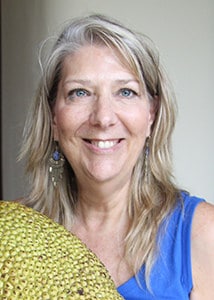
Hi – I’m Jackie Lange, and I love living in Panama! I moved from Texas to Boquete in 2010. My husband and I were searching for a place to retire where we could have spring-like weather year-round. We wanted to escape the extreme heat of Texas and the high air conditioning bills necessary to keep life comfortable there.
We also wanted to live in a country with a more stable economy and government than the United States.
I am no newcomer to international living. I have moved 24 times, lived in 5 countries, and traveled to 26 countries. I know a lot about relocating, including overseas. I’ve also started multiple companies which continue to help fund my lifestyle today.
After two years of research and visiting many different countries, including Costa Rica, Belize, Mexico, and Chile, we arrived in Panama. We flew into Panama City and then on to David, on the far western side of Panama, where we rented a car and spent two weeks driving and exploring several different towns along the way back to Panama City.

We fell instantly in love with the small town of Boquete as soon as we saw it. You can’t read about how a place “feels.” You must go there and see for yourself to know it is a fit. The people were very friendly, and the natural beauty was breathtaking.
A picturesque valley surrounded by majestic green mountains and a stream running along one side of town. The air was crisp, and the weather is year-round spring time!
The original plan was to retire and enjoy living in Panama. Of course, being the serial entrepreneur that I am, that didn’t last long! After I moved to Panama, friends and associates from back in the States became curious. Many did not feel comfortable traveling alone in a foreign country and asked if I’d be their guide.
Soon, I had eight people who said they wanted to come to see Panama. I rented a bus and driver; that was my first tour of the country. I continued to get inquiries from people who wanted to know how they could get on “one of my tours” and so, the Panama Relocation Tours Company was born in 2010.
Since then, I have lived as an expat in Panama, and I have met others who love living here just like I do. However, I have also met folks who believed stories they read online of Panama being a paradise where you can live like royalty on pennies.
No place is a paradise for everyone! Some of these people were greatly disappointed when the reality of their new home was not the rose-colored-glasses vision they had expected. Some of these people move back to where they came from with tremendous financial loss and undue stress.
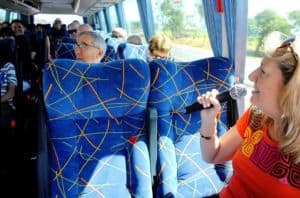
One of the main objectives of Panama Relocation Tours is to show you what living in Panama would “REALLY” be like. We visit towns all over the country and meet with expats in every town we visit. You can chat with these expats over lunch or dinner and hear their personal stories. You can ask them questions about the important things to you and hear first-hand viewpoints of what living in Panama is like. Unlike other relocation companies, we aren’t trying to sell you real estate, so there is no hidden agenda!
Panama Relocation Tours attracts people from all over the world and all age groups, not just retirees. Panama is a very diverse country. You can’t know what area is a good fit for you by reading online or sitting in a workshop in a fancy hotel.
This is a life-changing decision you are making! You really need to see Panama in person to make a decision.
Life in Panama City is like another world compared to life in Boquete or Bocas del Toro. I truly believe there is a place in Panama for just about everyone, and my goal is to help you find the right place for YOU.
Discover if living in Panama is right for you with our “boots on the ground” 6-day, 7-night ALL INCLUSIVE Relocation & Retirement Tour.
One flat tour fee includes all ground transportation, hotels,
three meals a day, and domestic flight back to Panama City.
VISIT
Visit Panama City, Coronado, Gorgona, El Valle, Santa Clara, Chitre, Las Tablas, Santiago, David, Boquete, Volcan, Cerro Punta and… all places expats call “home”.
LEARN
Learn about affordable health insurance, getting big discounts on what you buy, about shipping, moving and shopping, pet relocation, how to find a car, and much more.
We’d love to show you what it’s like to live in Panama!



